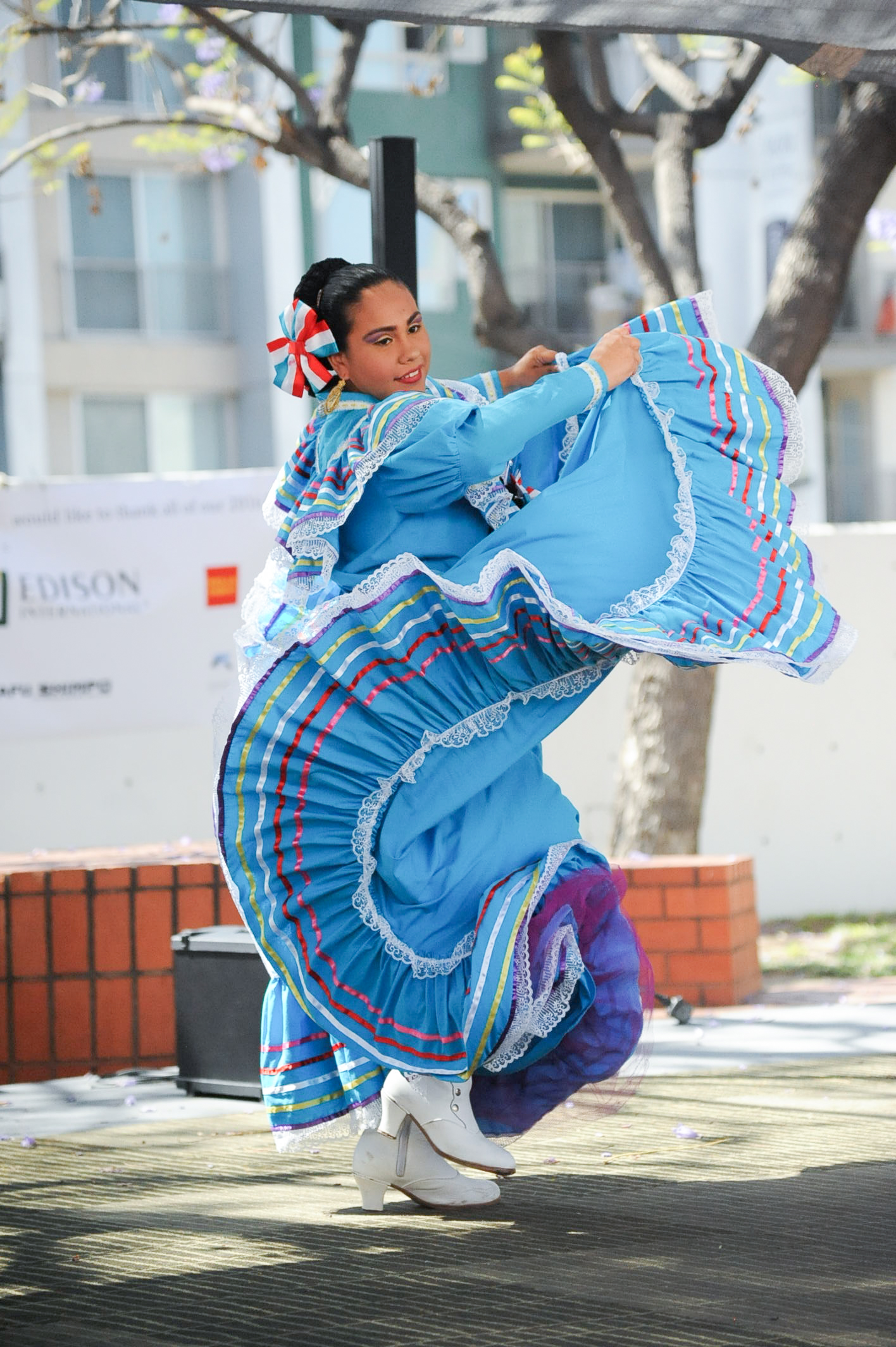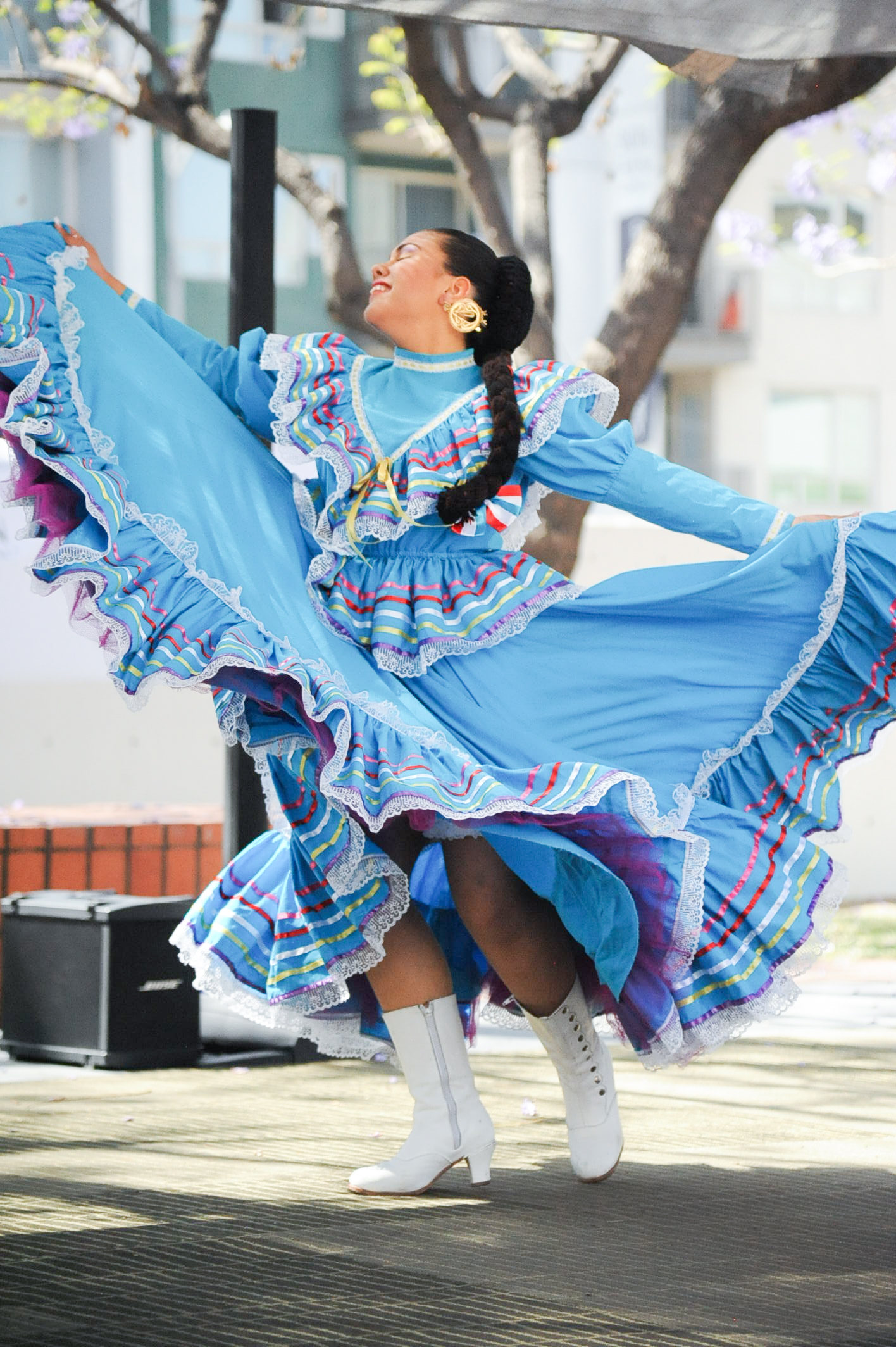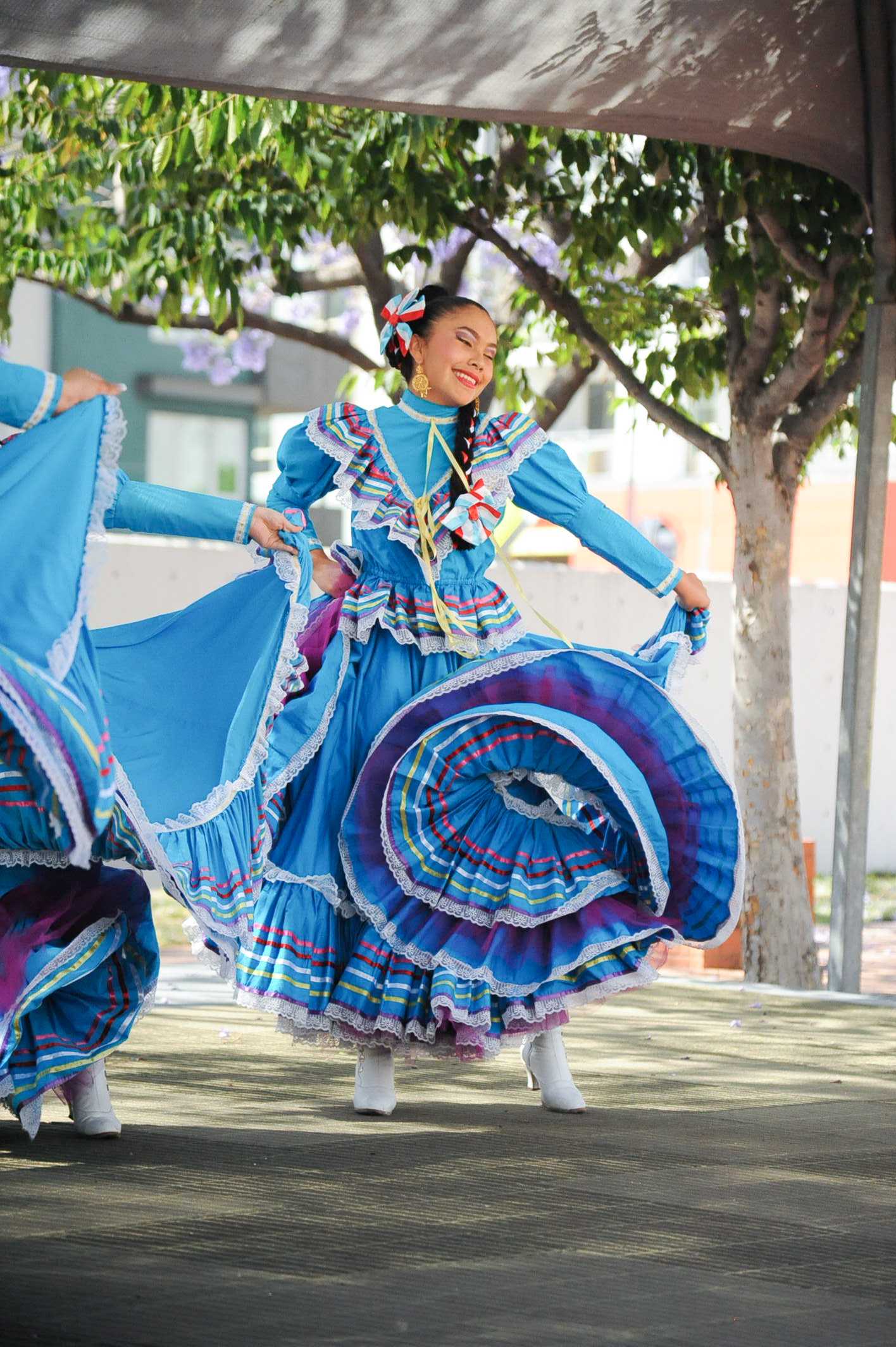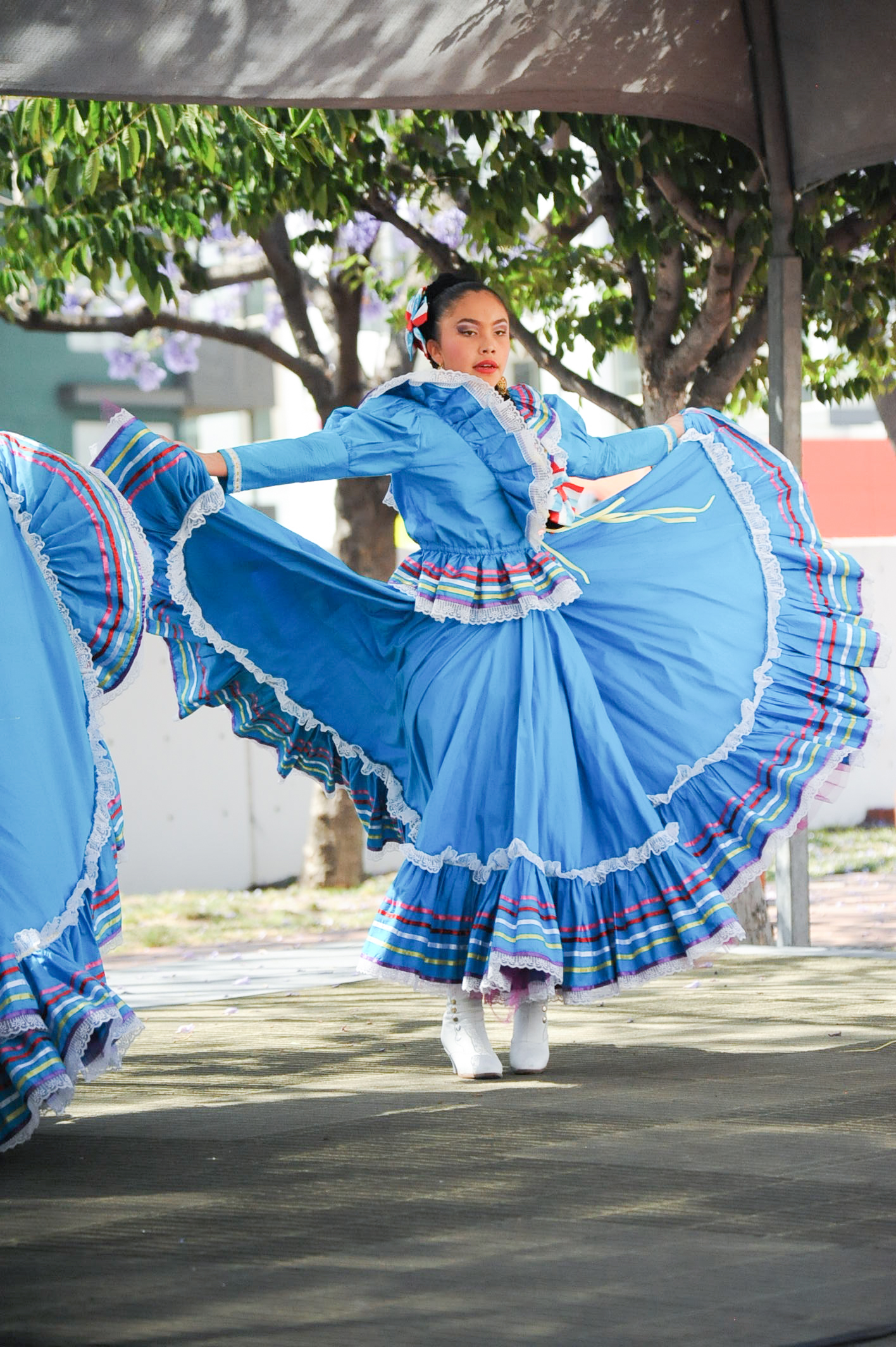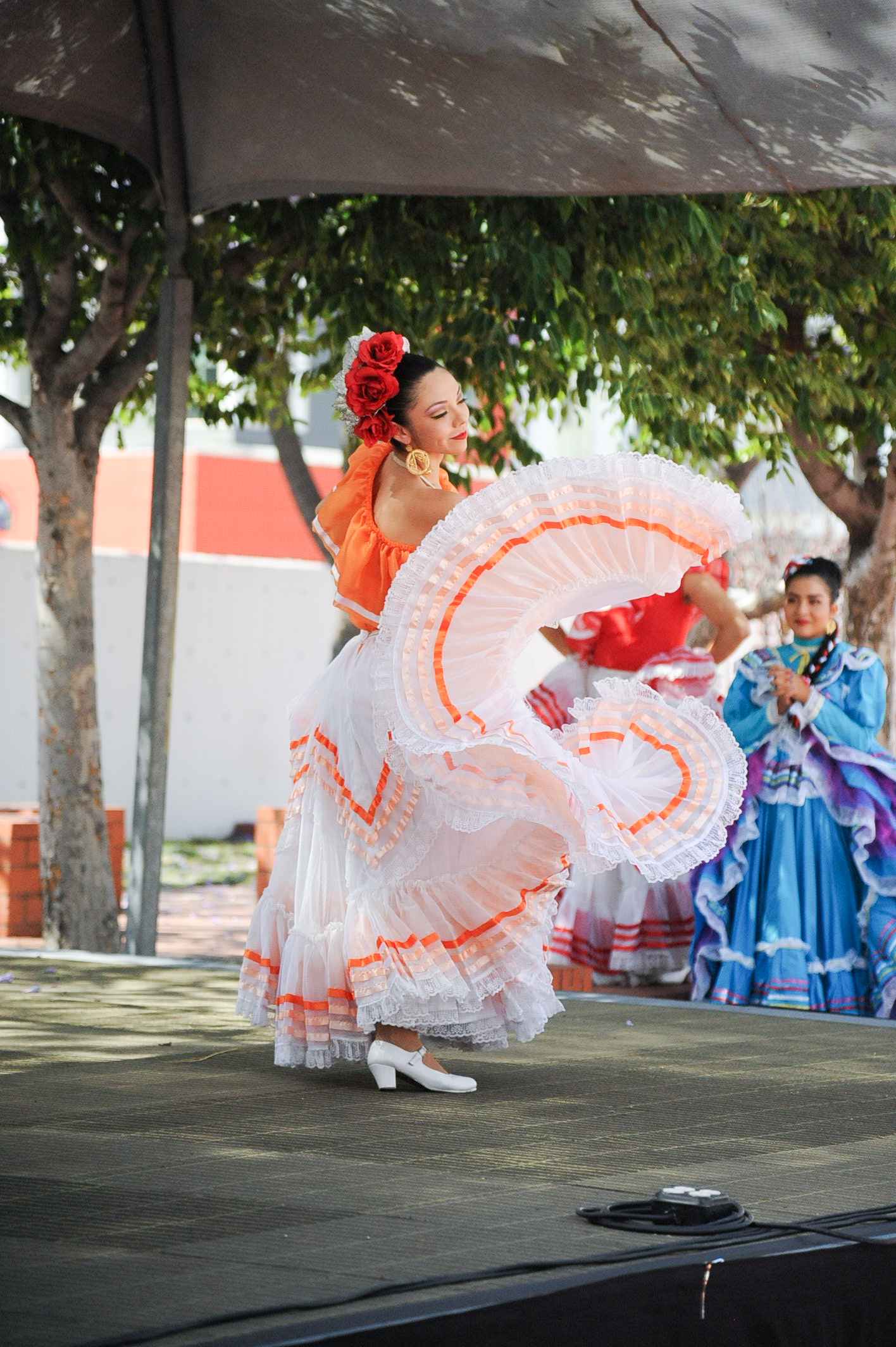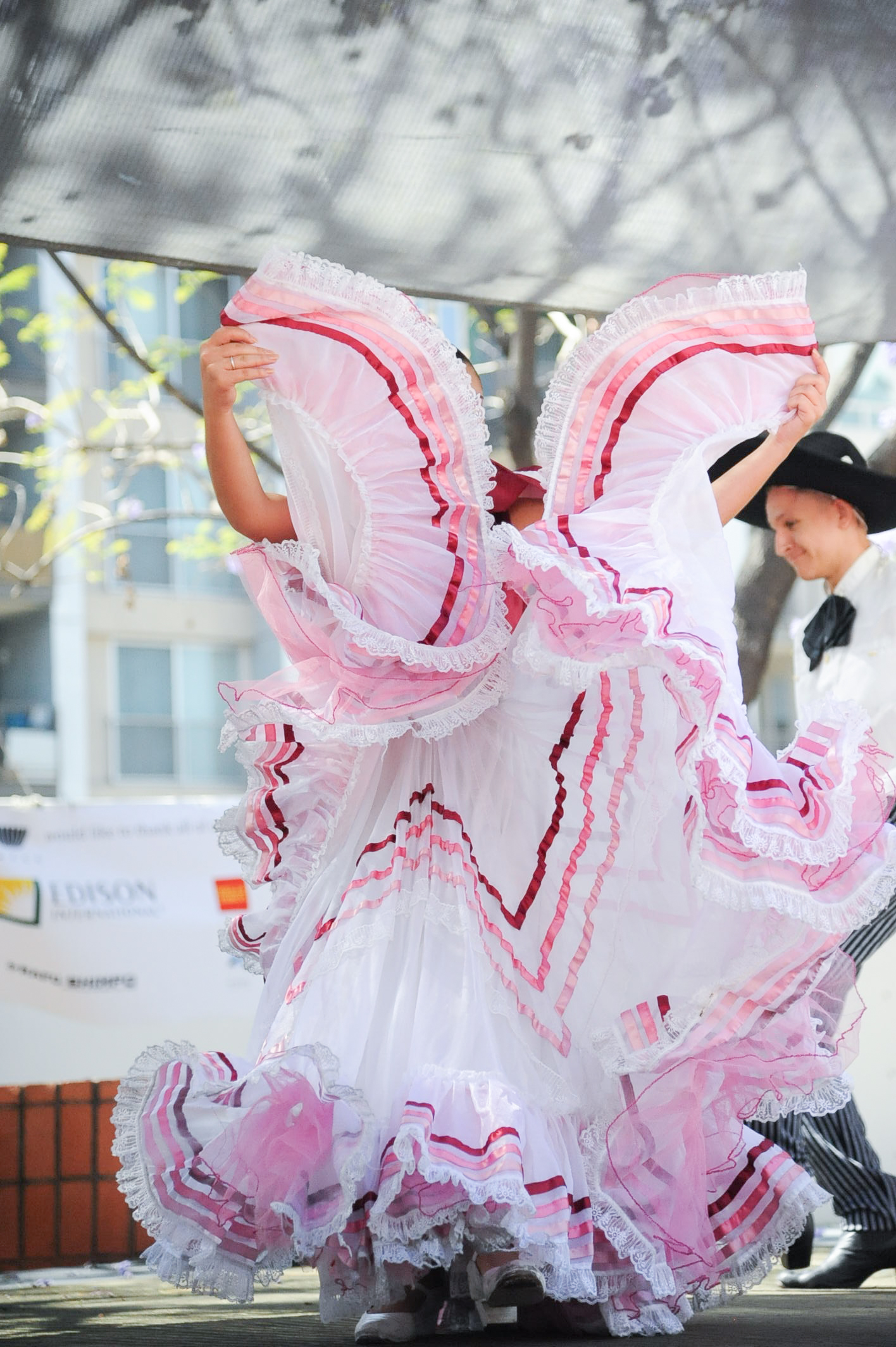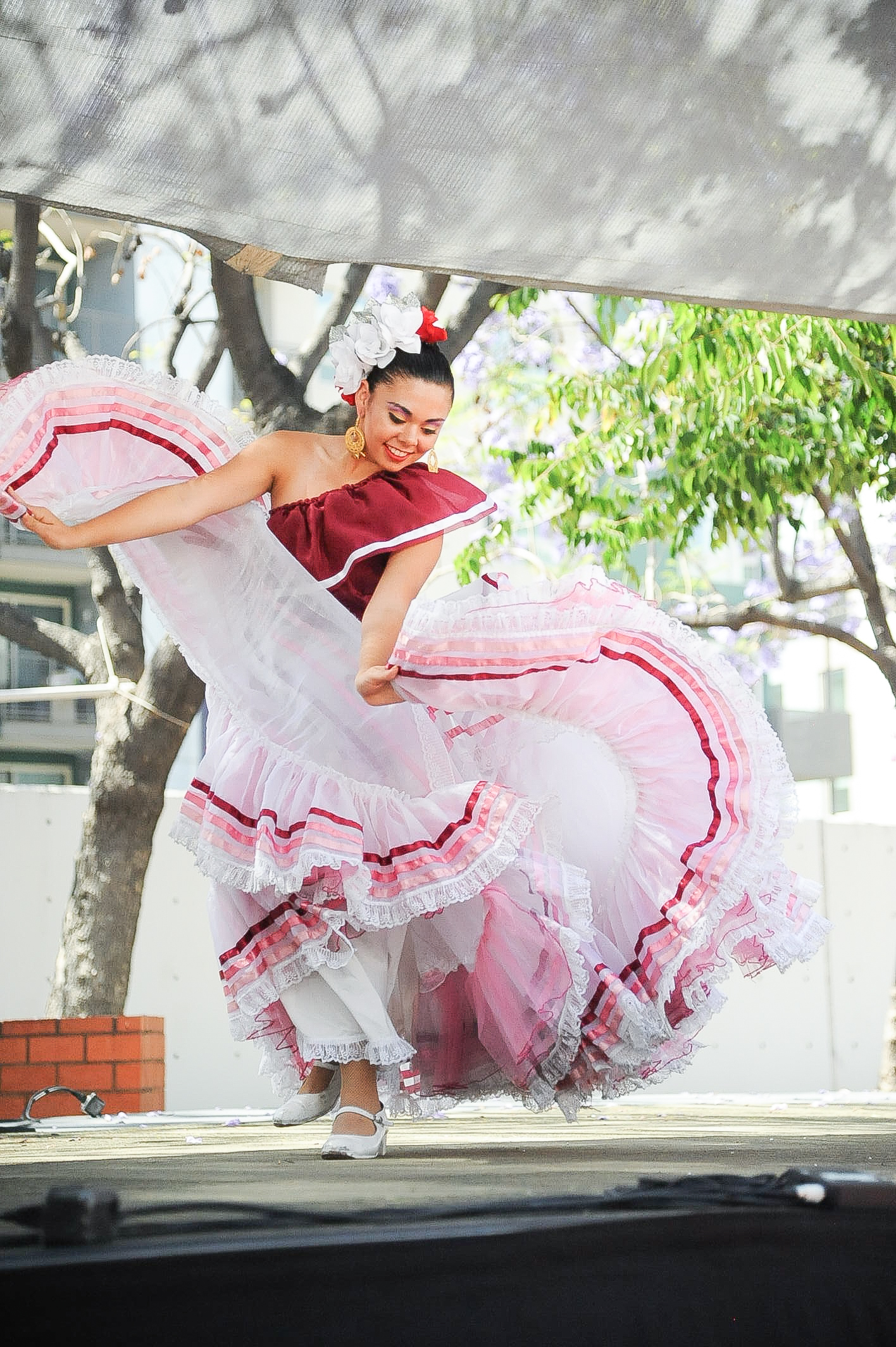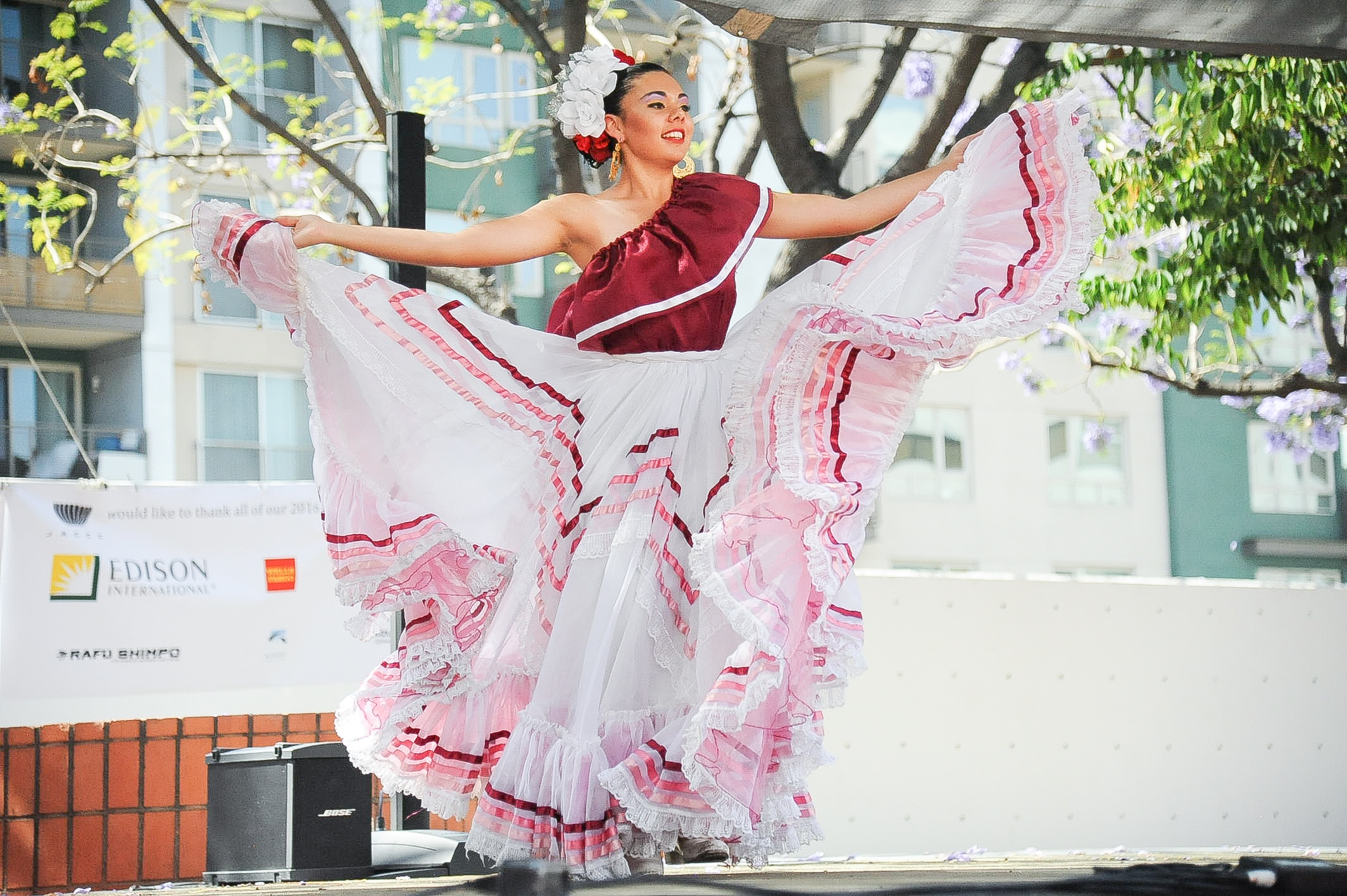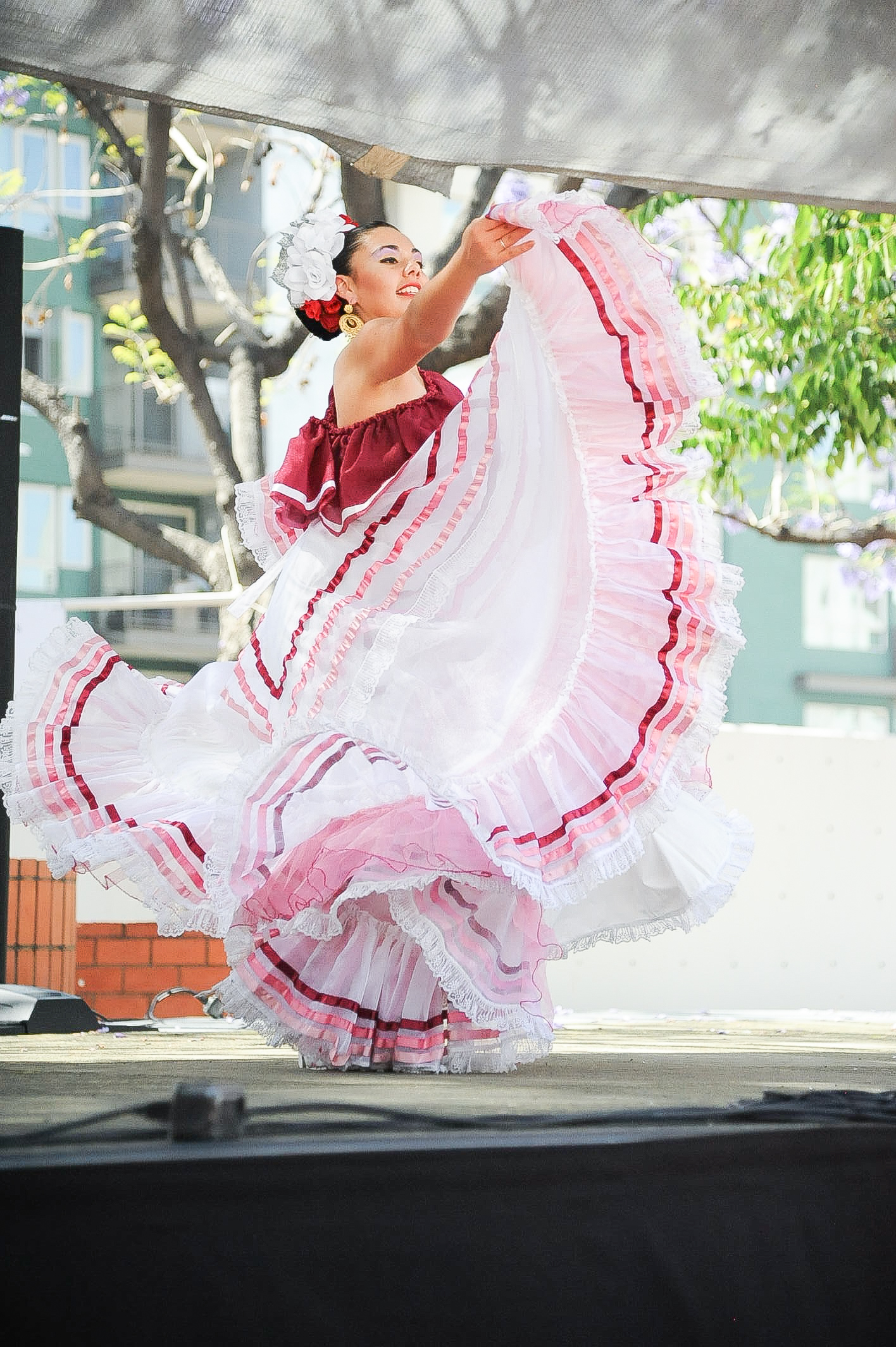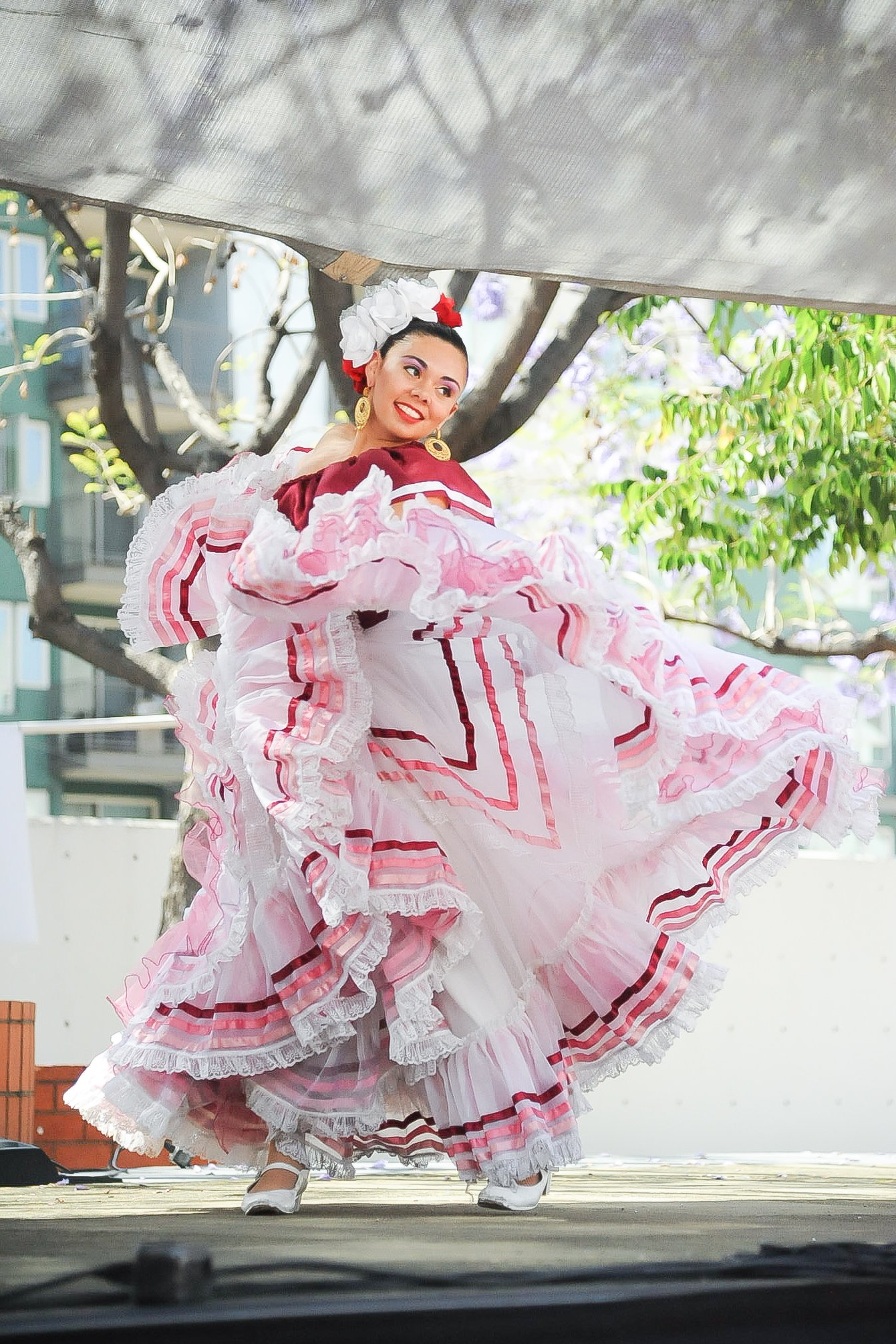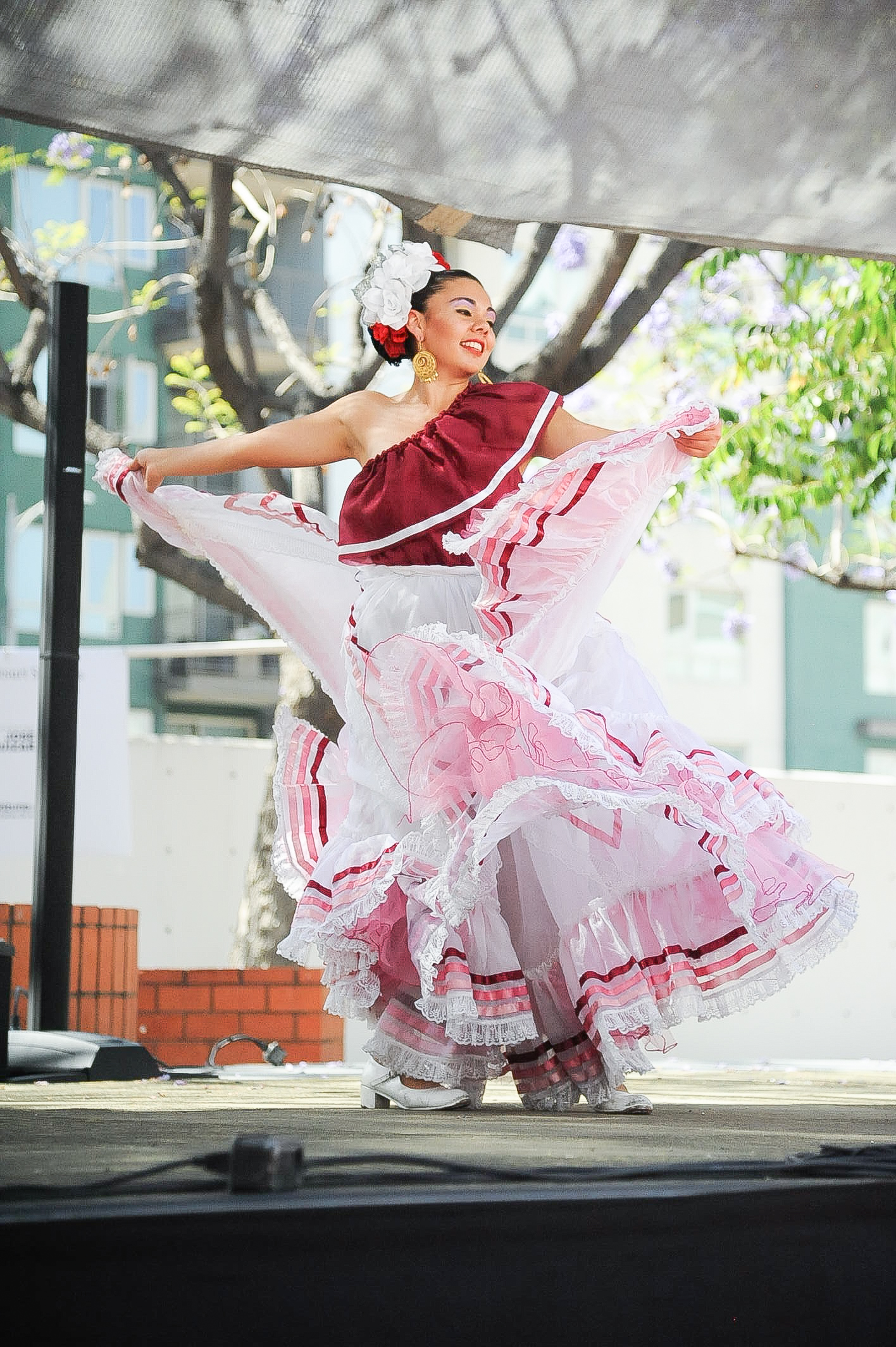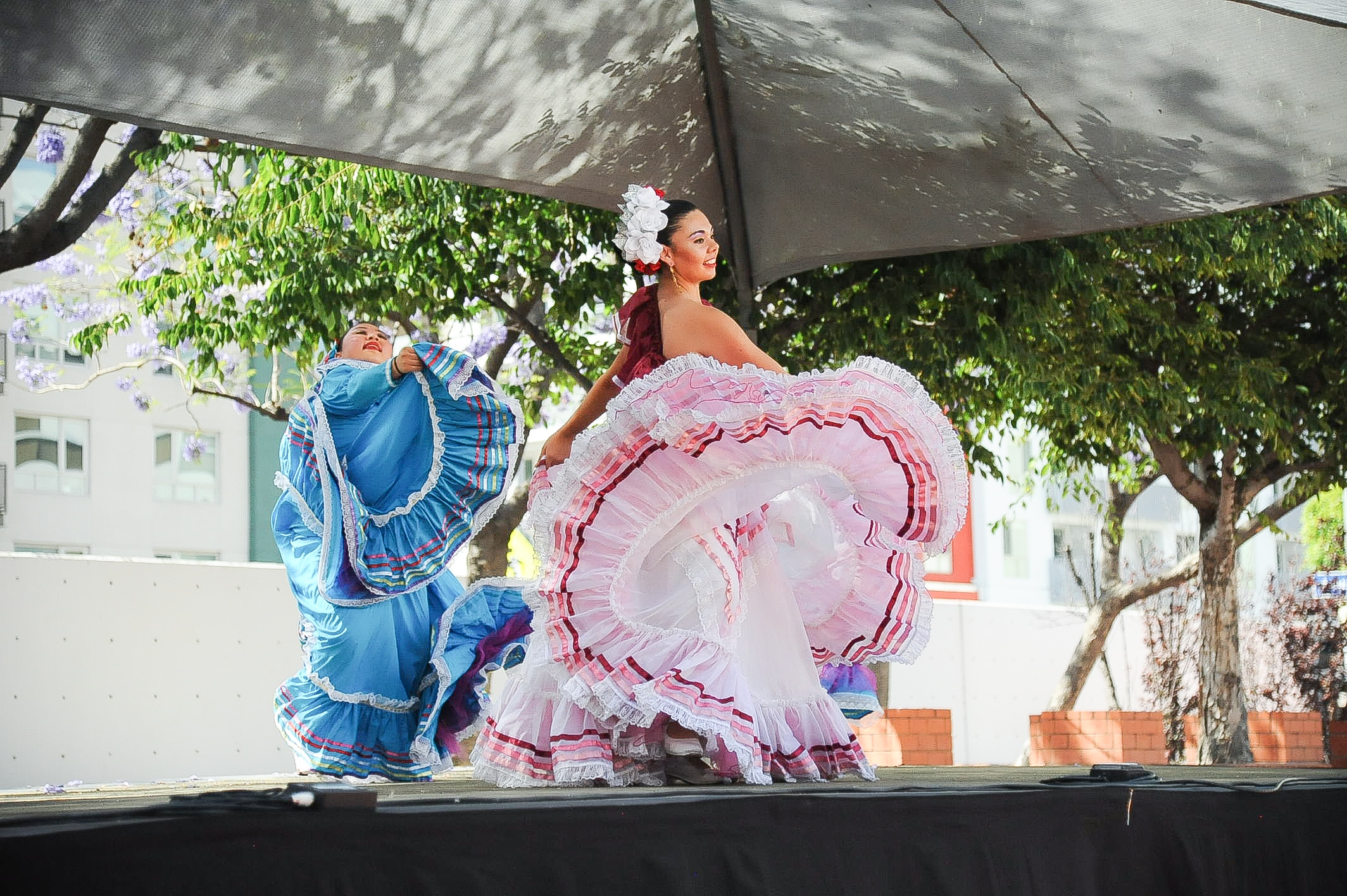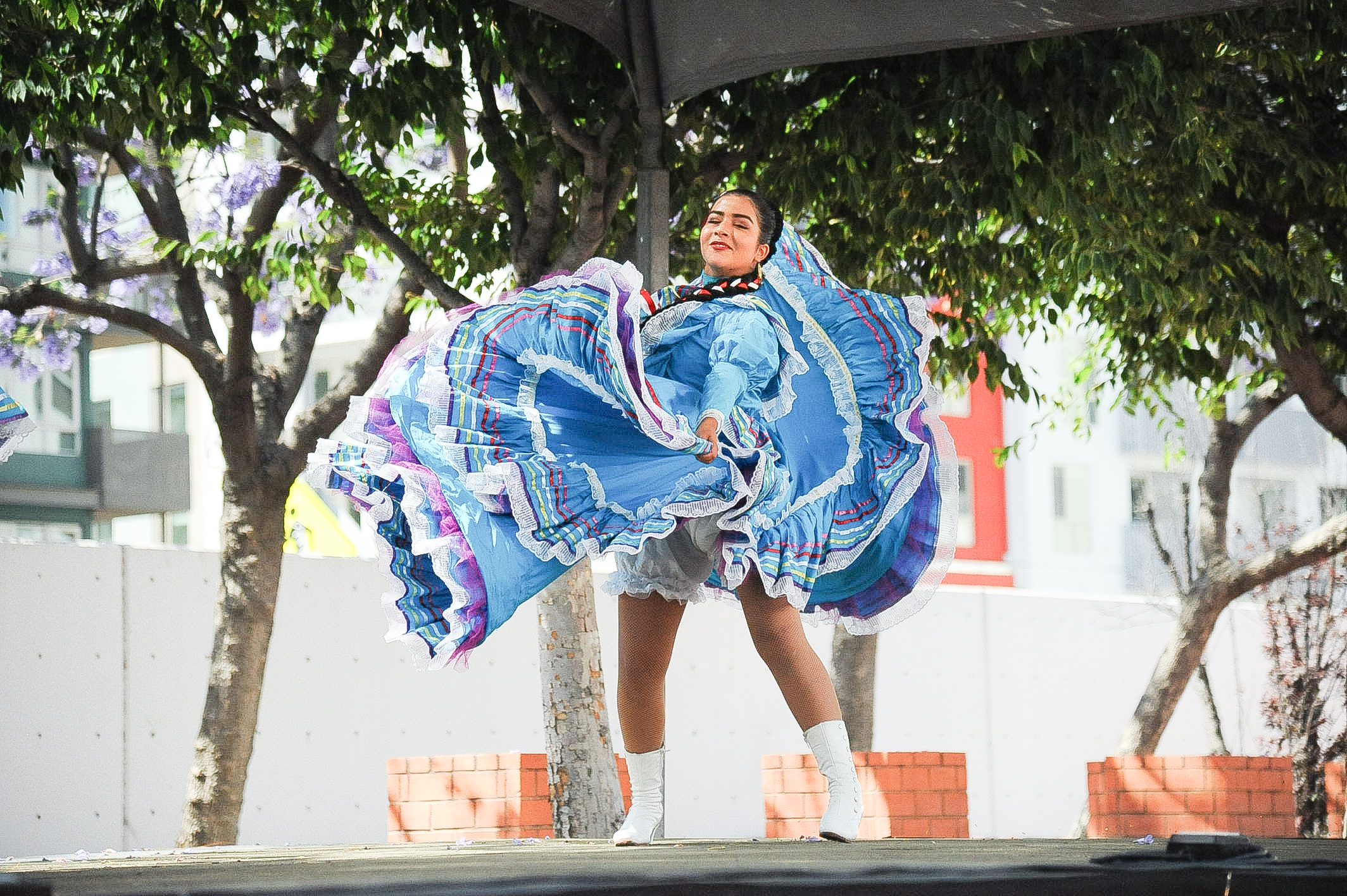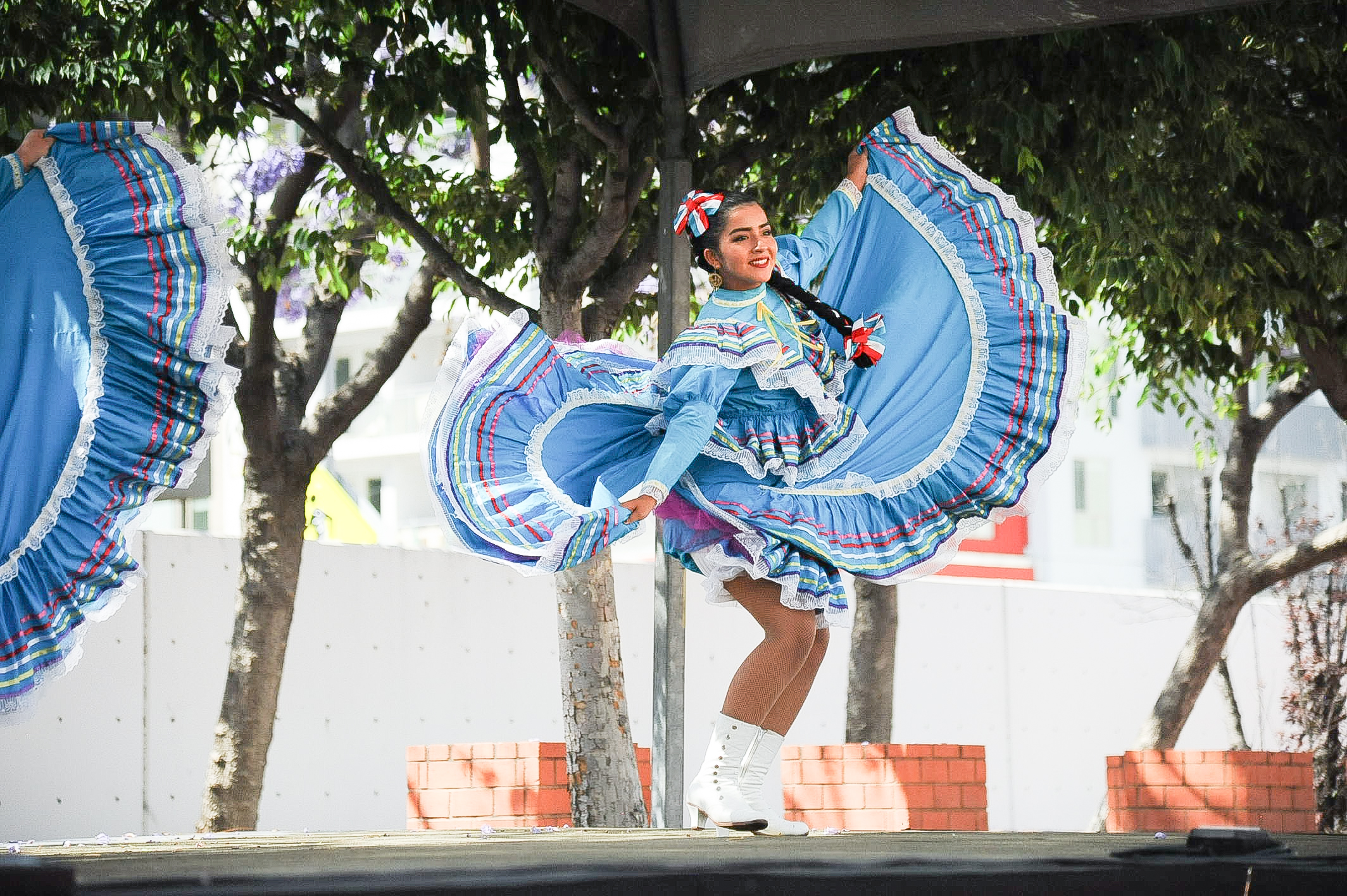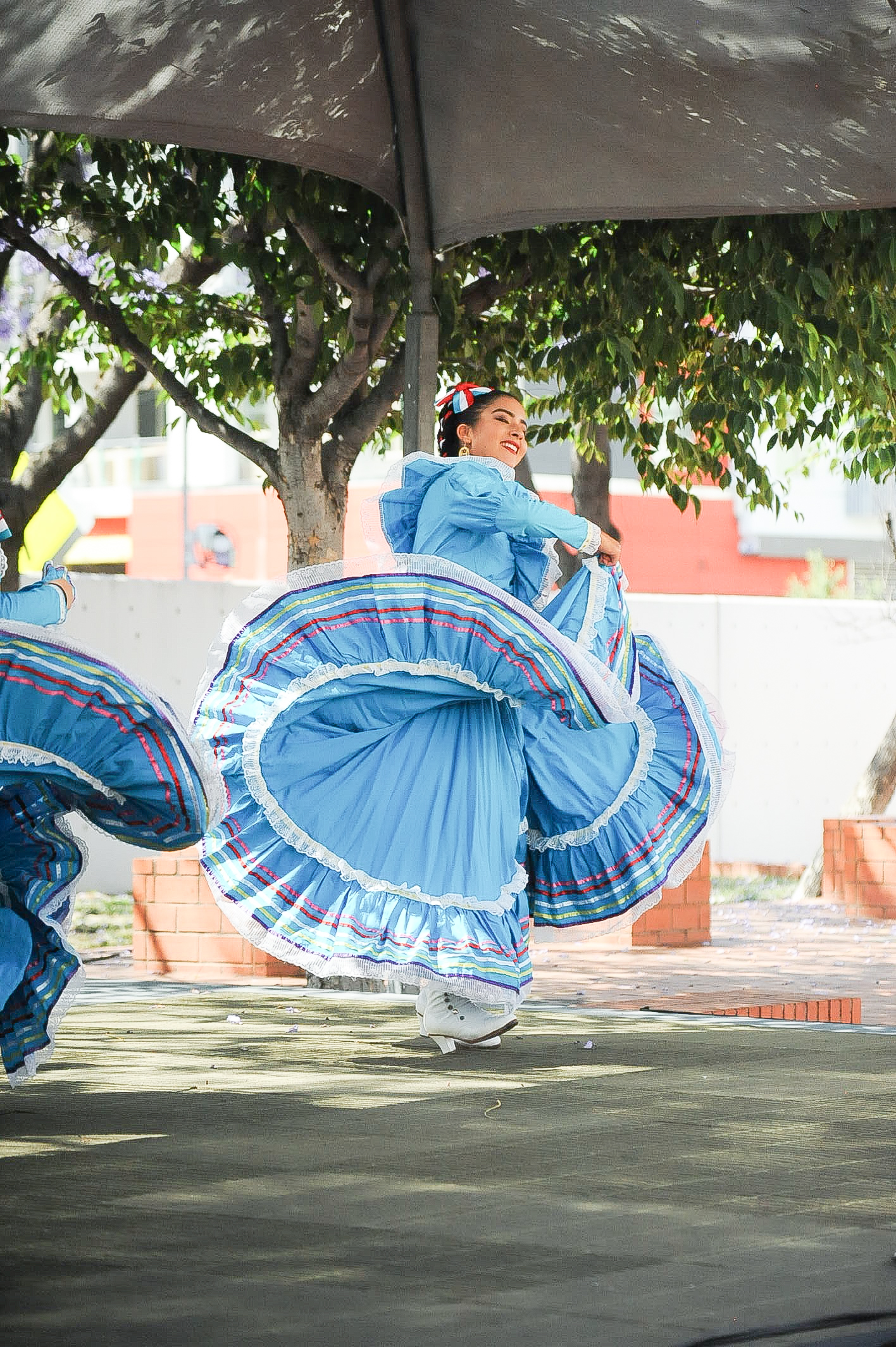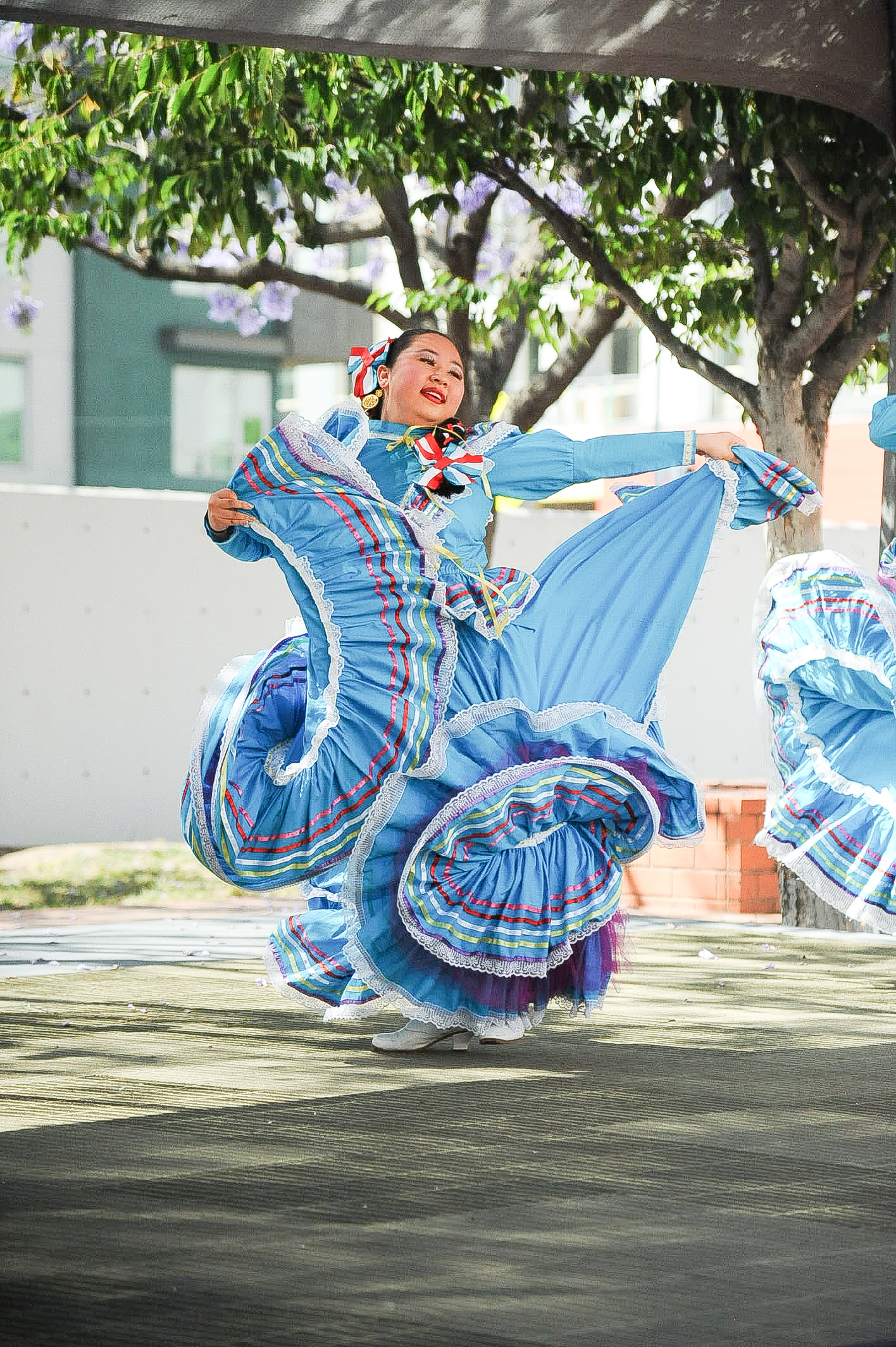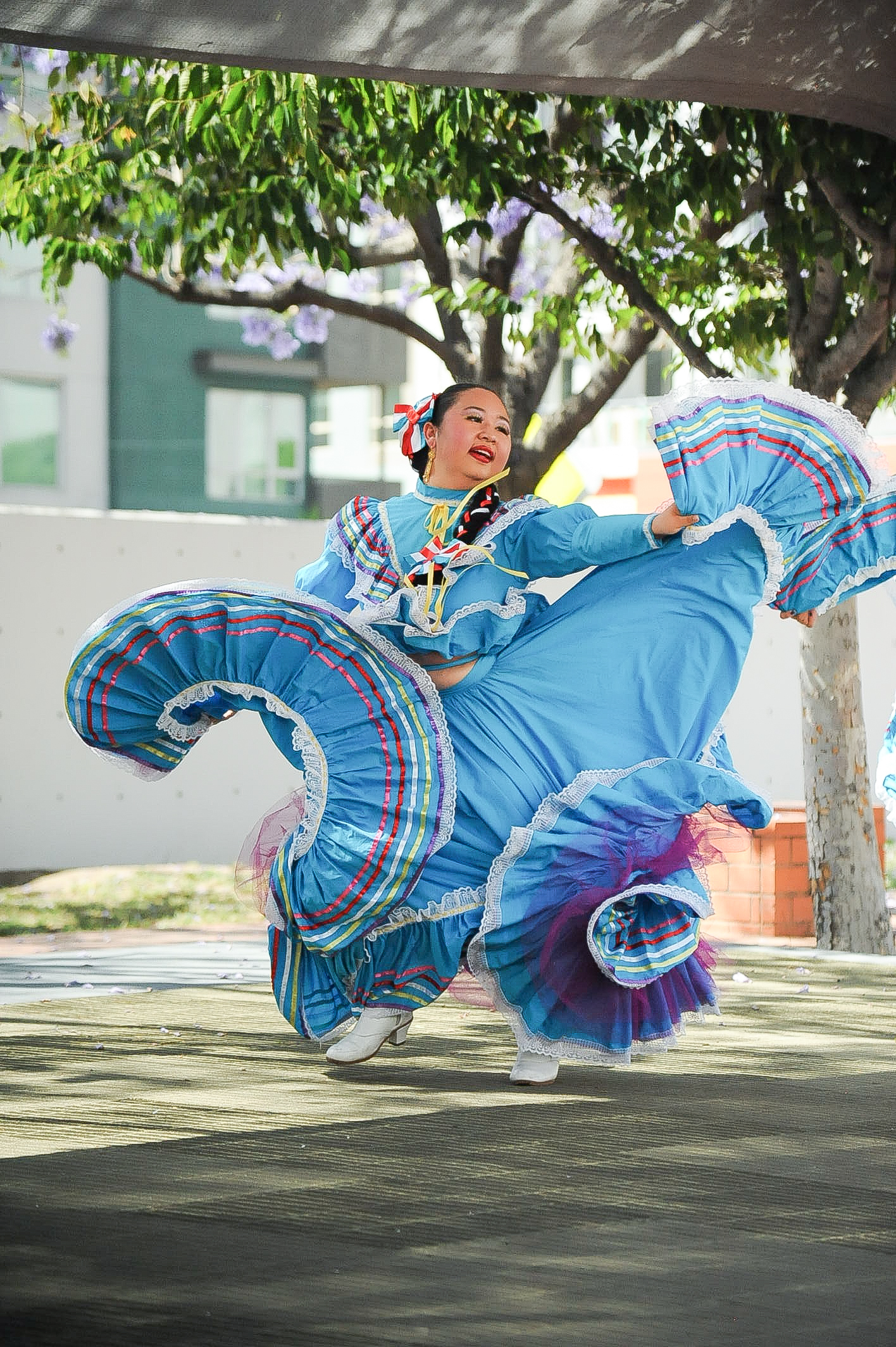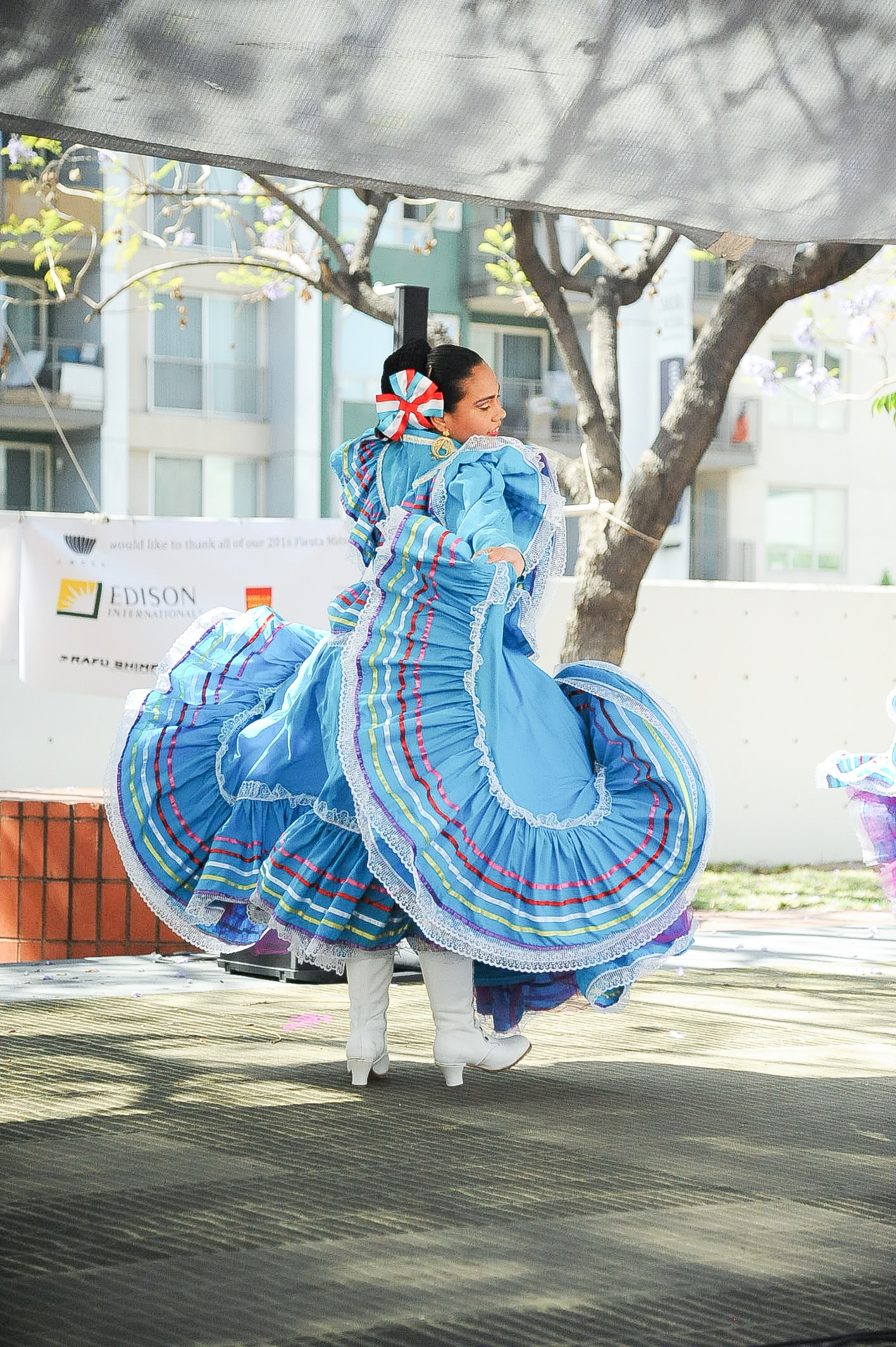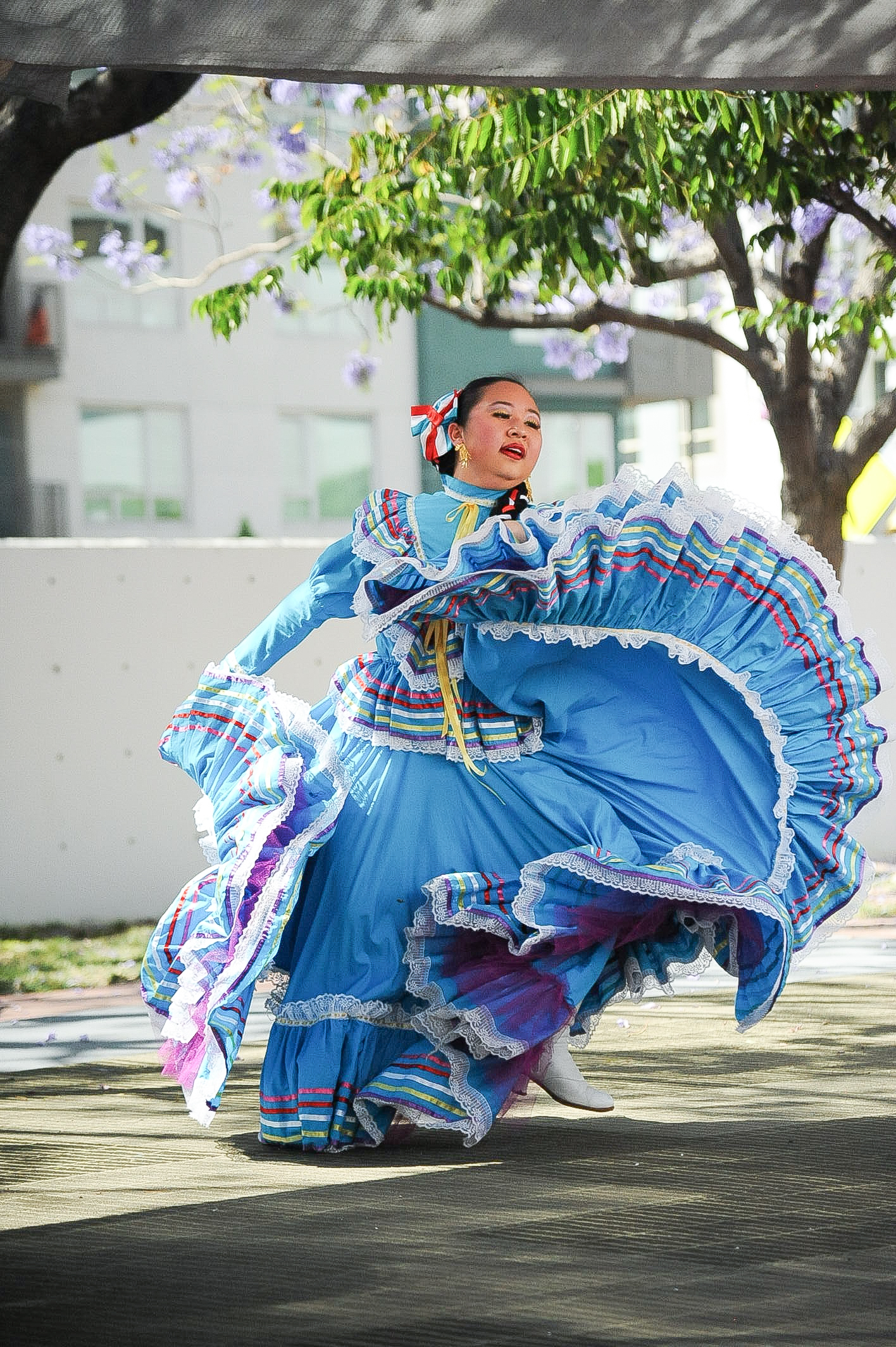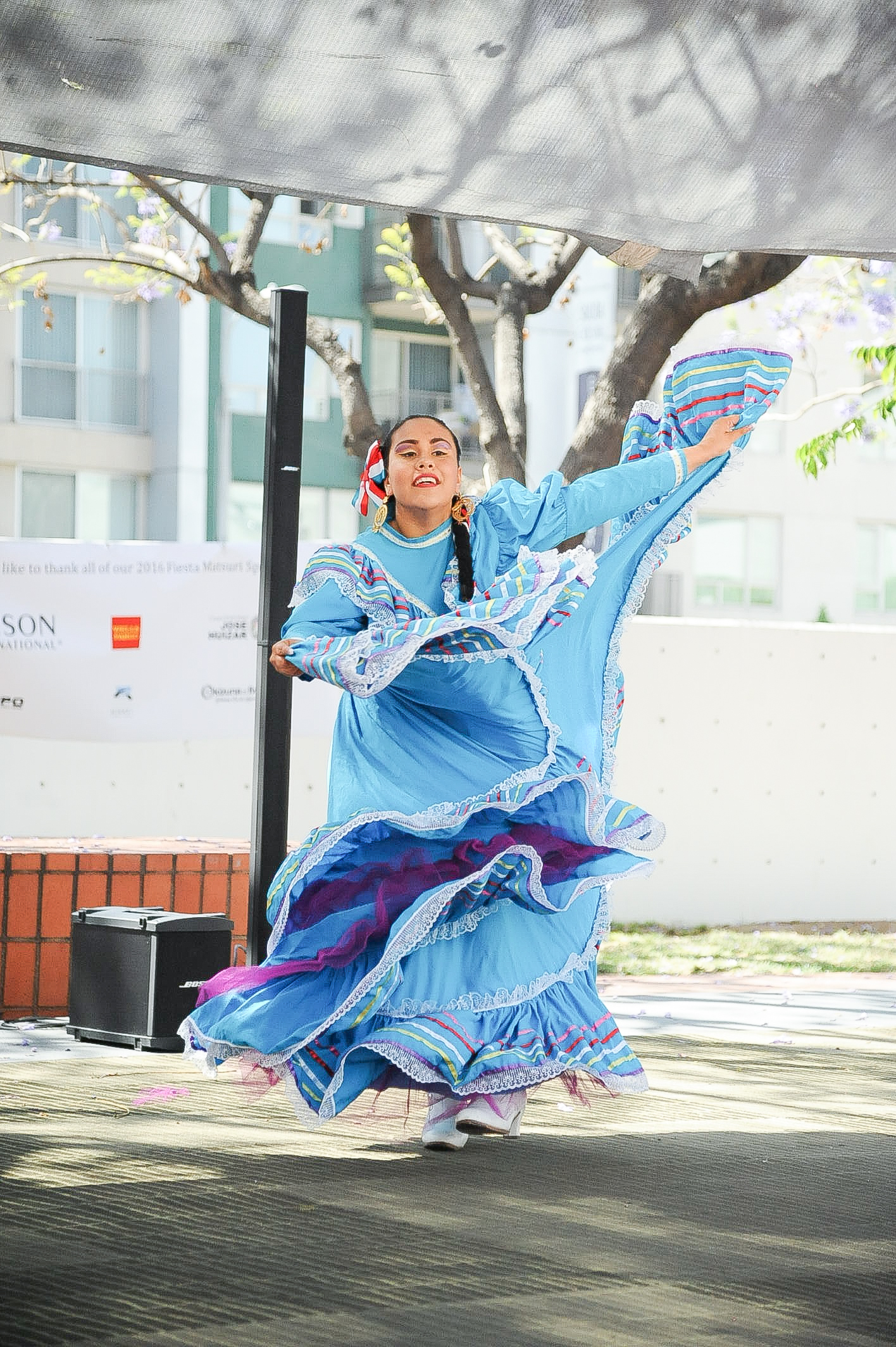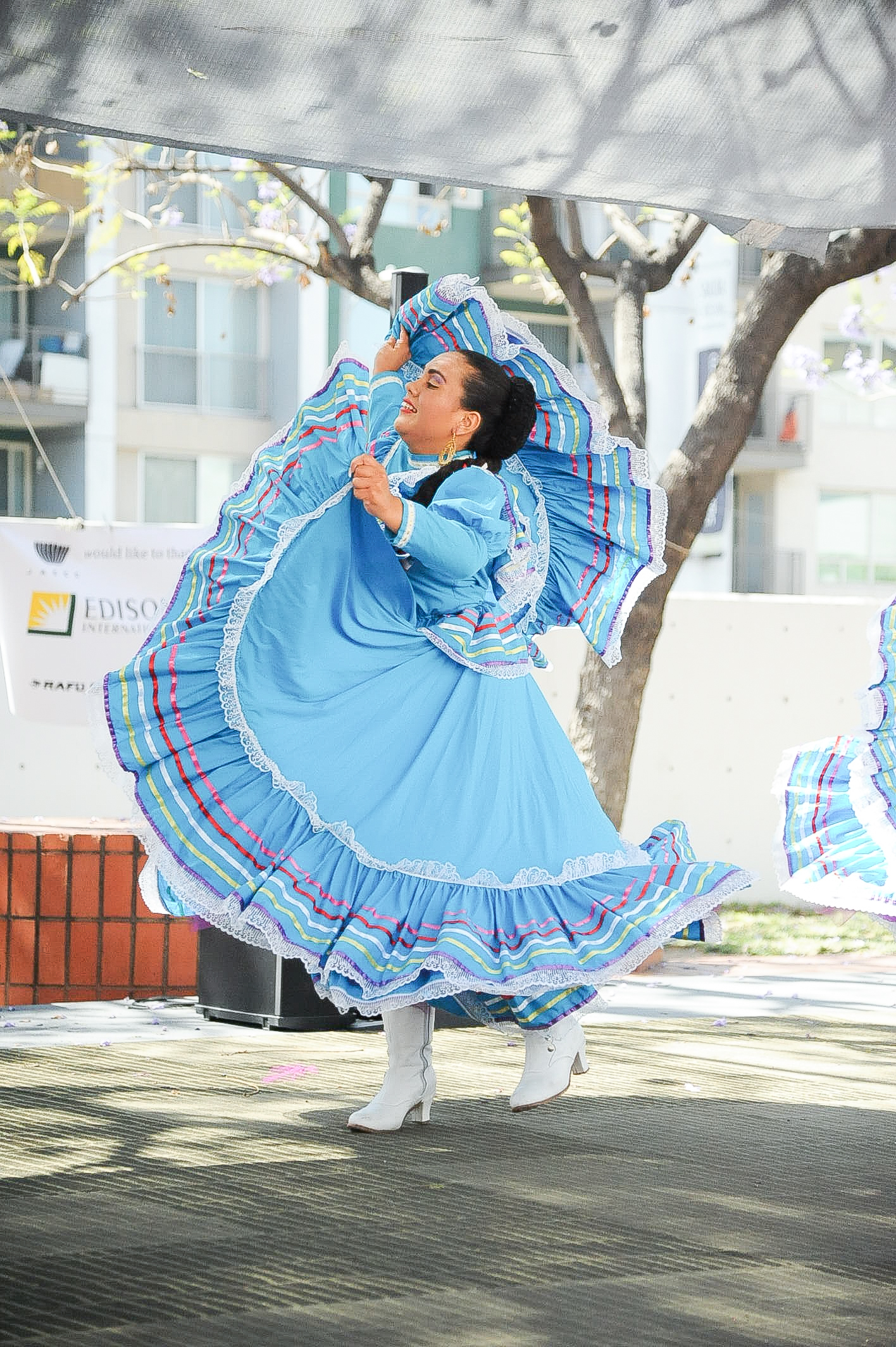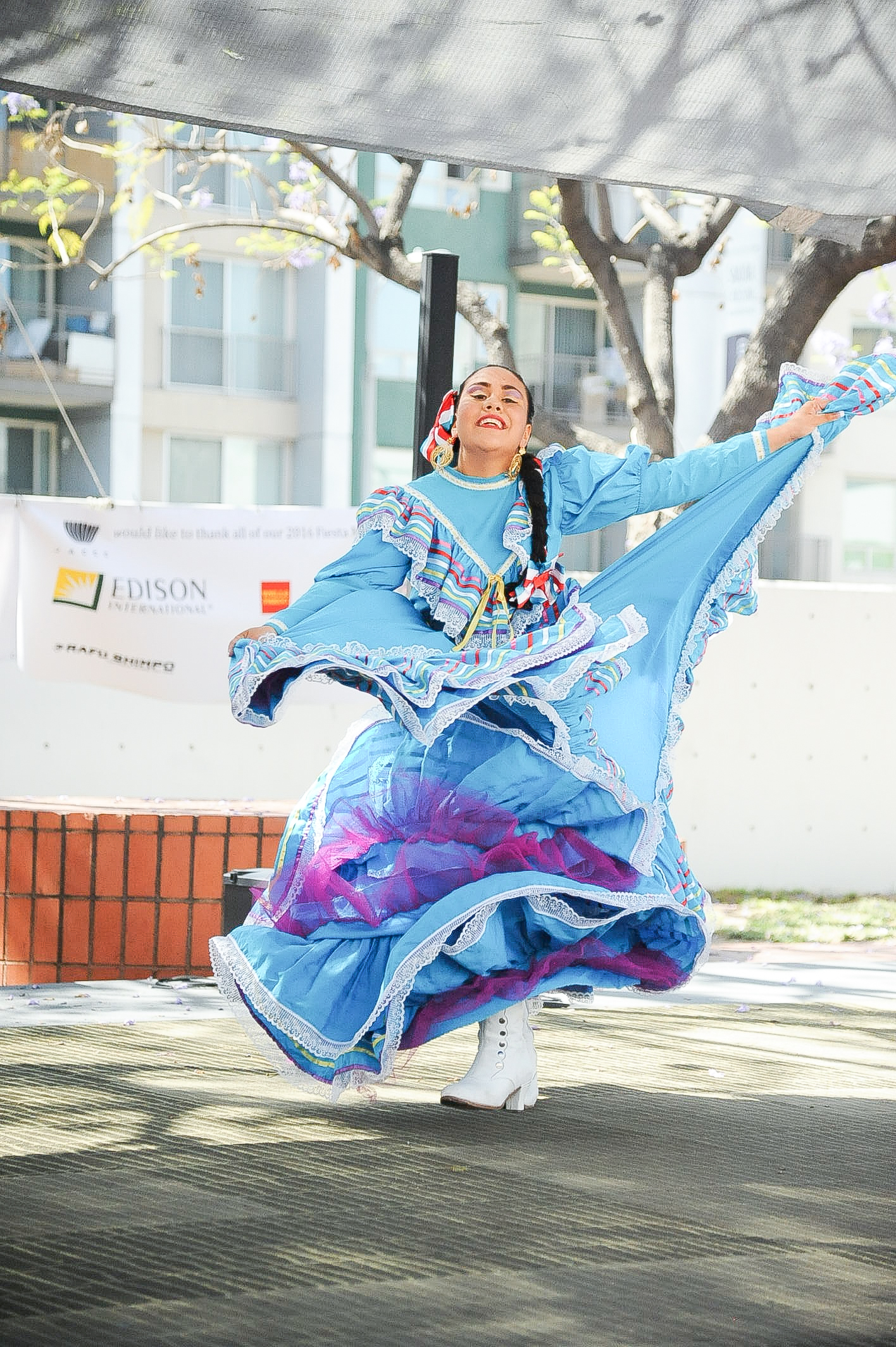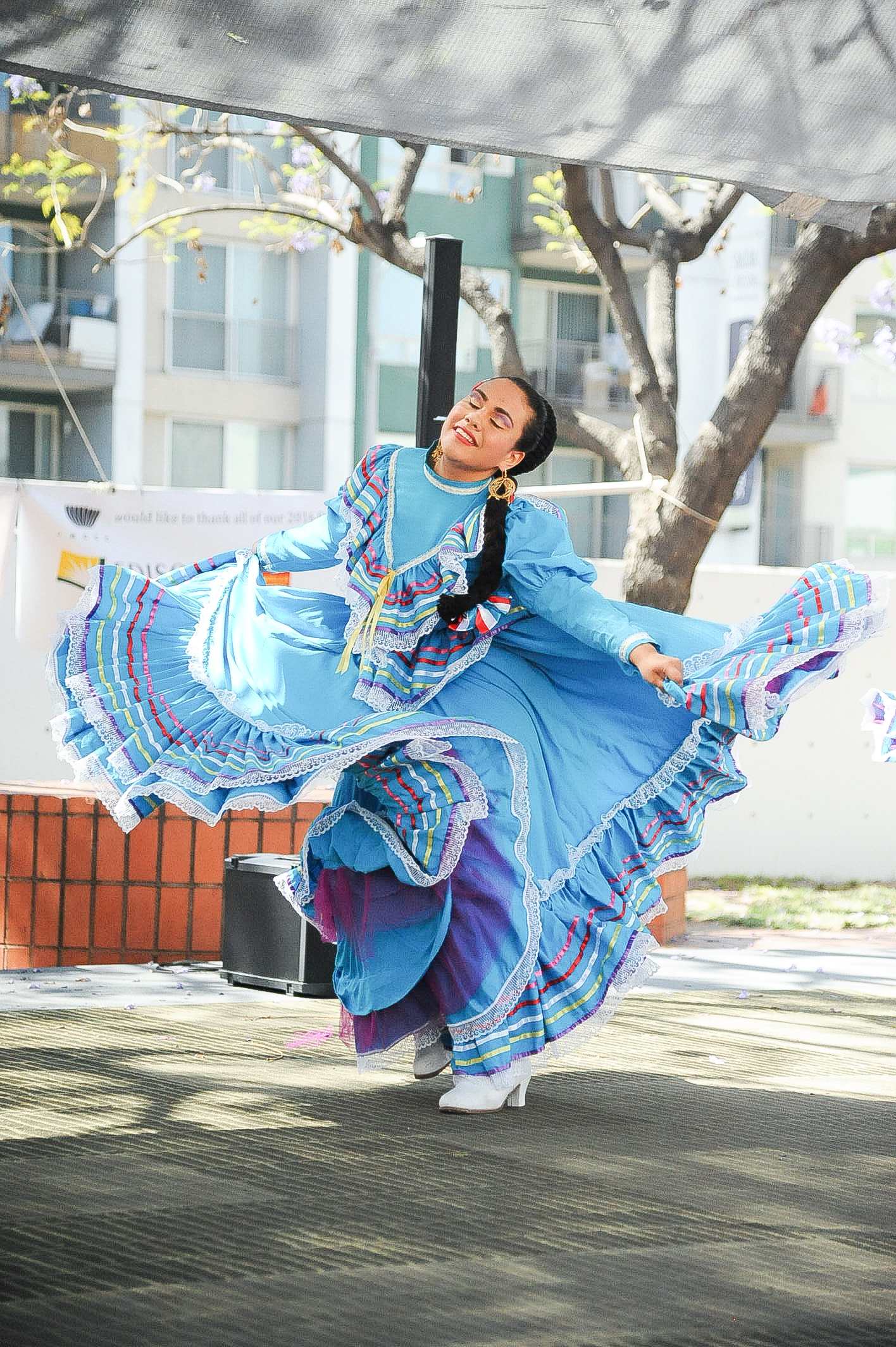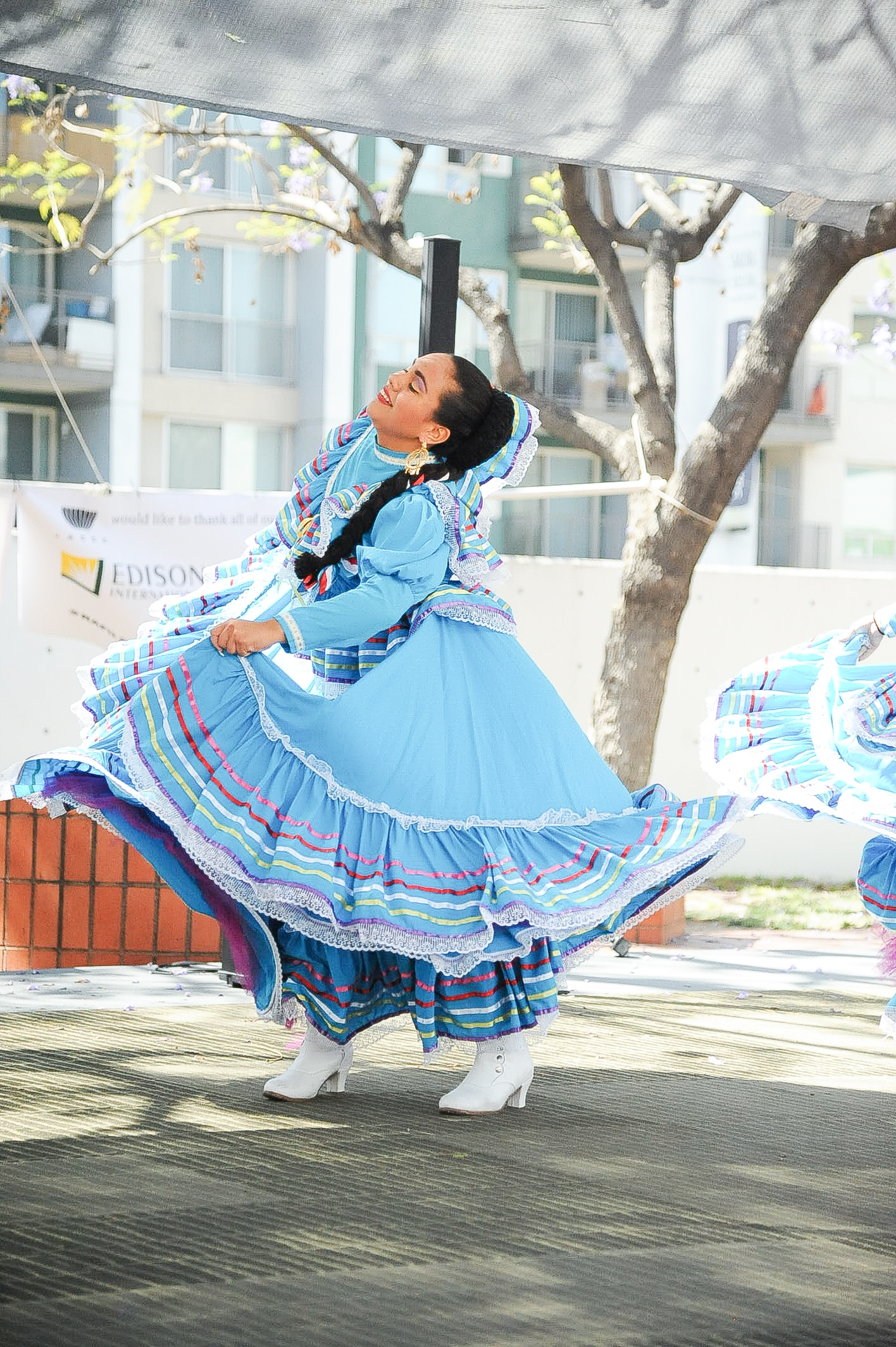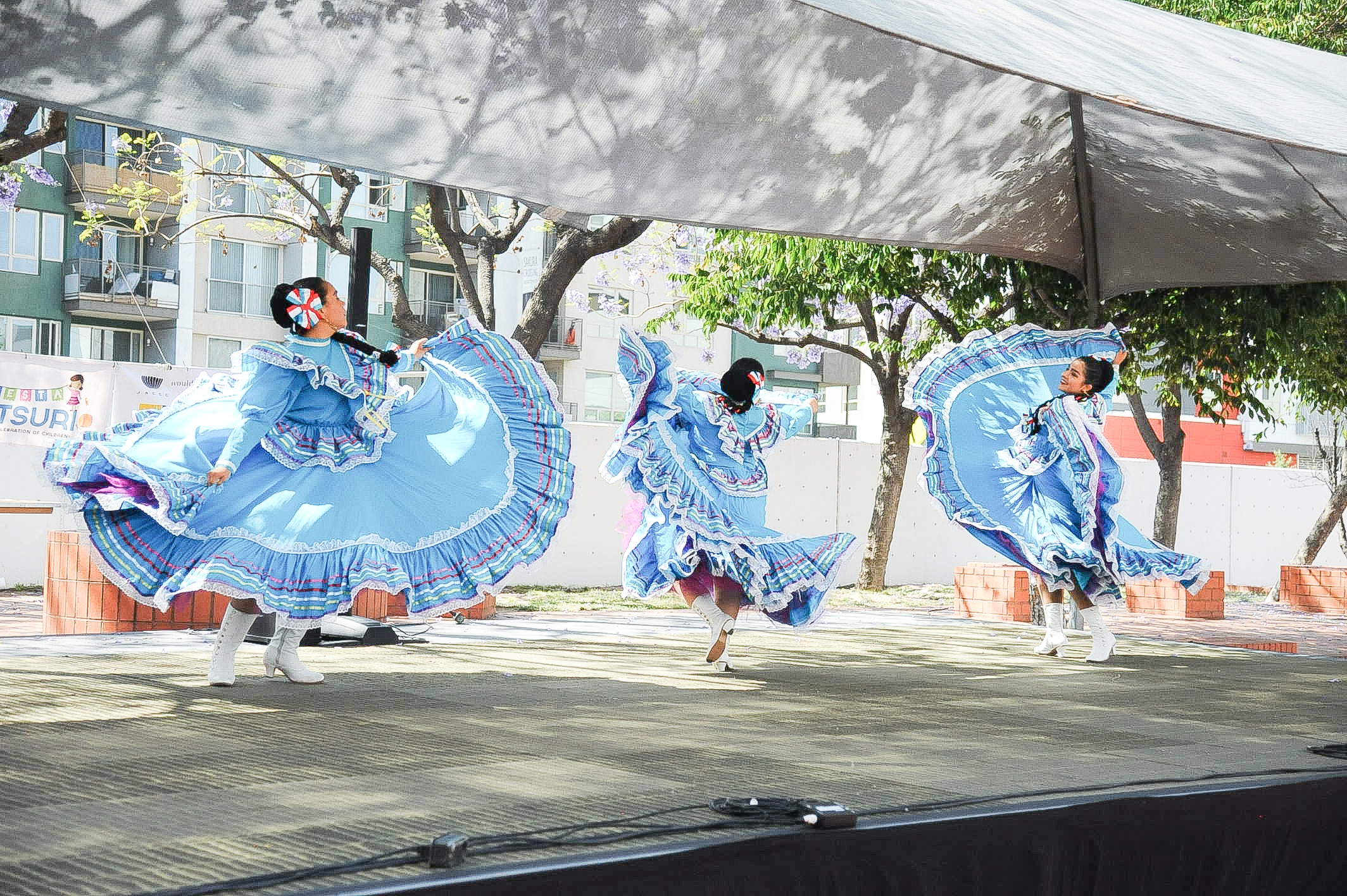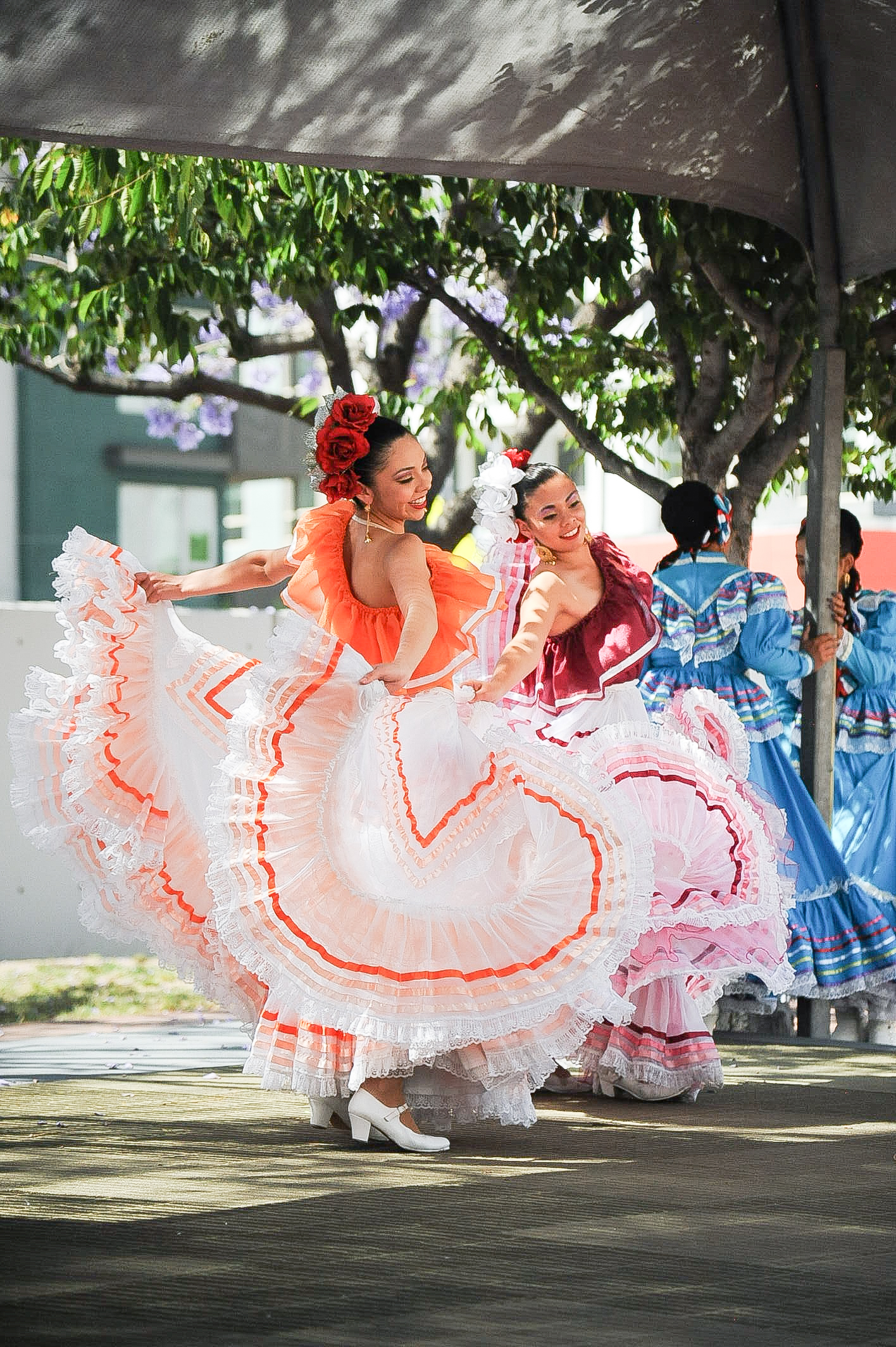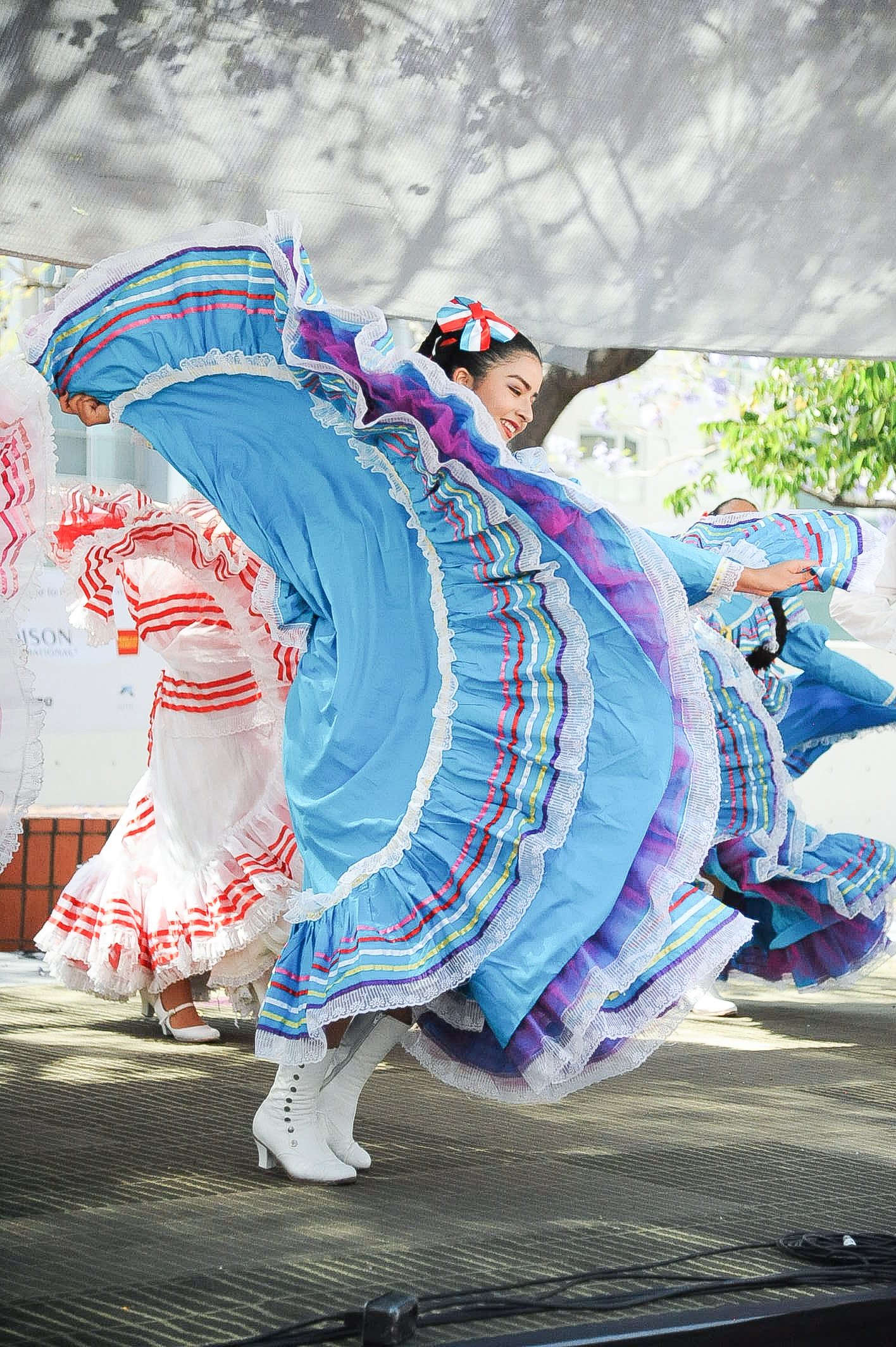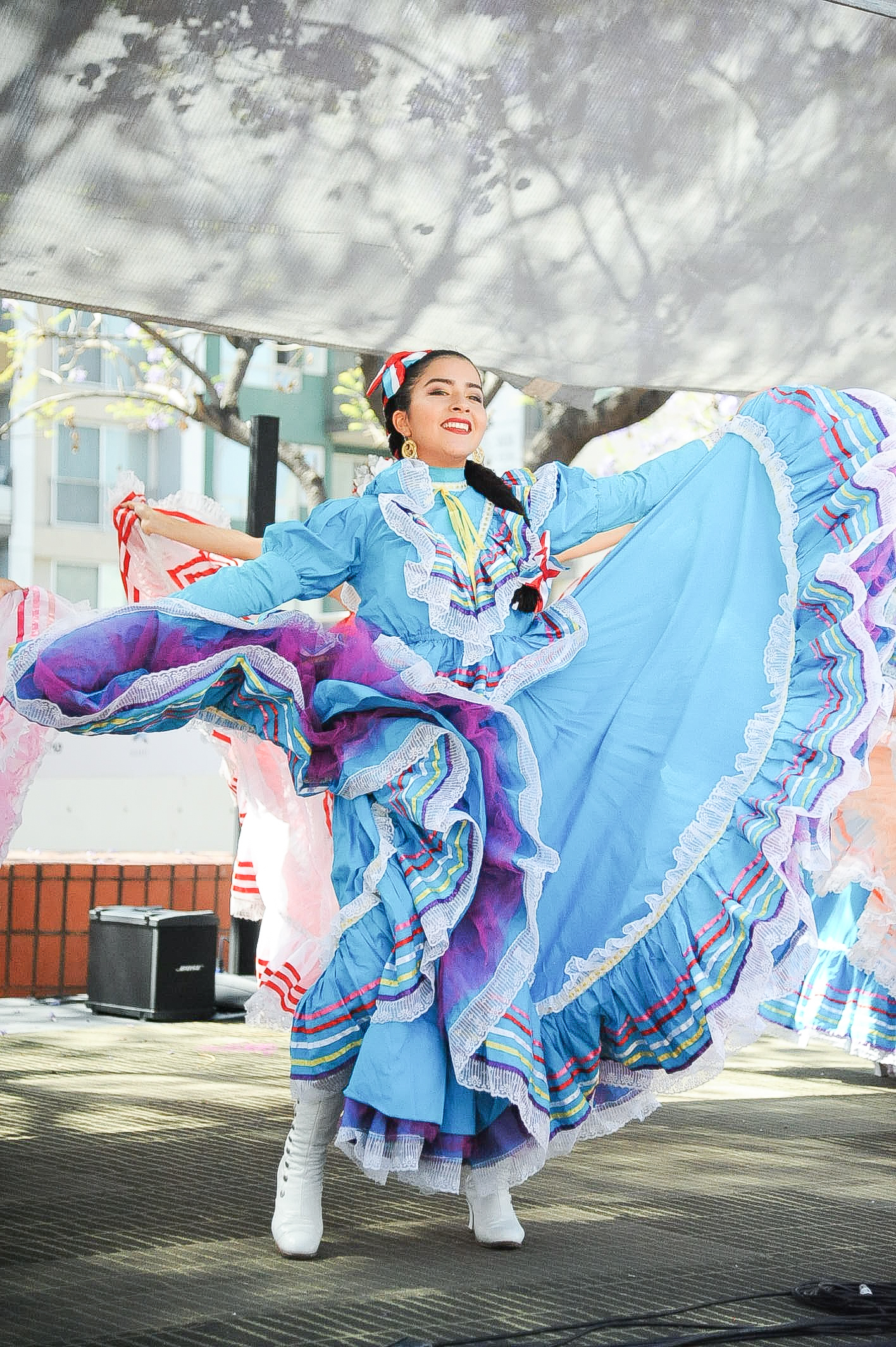If you clicked over from the JACCC - Fiesta Matsuri page, welcome. If you did not, I will give you a quick rundown.
In January of 2016 I started working with the Japanese American Cultural & Community Center (JACCC) located in downtown Los Angeles. I had the chance to work with them on several occasions in 2016 and on May 1st, they held their Fiesta Matsuri event. The JACCC would describe the event as follows:
A multi-ethnic celebration for children and their families including arts & crafts workshops, games, food, and performances on the plaza.
It was a fun day and the stage performances, in particular, were great. I had to create and dedicate an entire page to one of the performances. There was a dance group with an amazing energy, whom performed three times during the afternoon. It was the Ballet Folklorico de Carolina. Specializing in cultural dances from Mexico and Spain, they were absolutely astounding. In their second of three performances in the afternoon, I was in awe not only of the talent they possessed but by a particular set of dresses their dancers were wearing. They came to the stage and I knew something amazing was about to happen, not only for the crowd, but selfishly, for me as a photographer...
The images below give you an idea of what kind of dresses we are dealing with...
I'm not sure if they are technically flamenco dresses, but I'm sure they are closely related or in the same family. Either way, as you can see, they flow. There was no doubt going to be a lot of movement in these dresses. The reason I was excited as a photographer is that as soon as they stepped on stage with those dresses, I knew that I was going to be presented with the challenge of accurately capturing the motion of those dresses. I needed to freeze them, mid-motion. How? With the use of a fast shutter speed...
Yes, of course, let's talk about shutter speed. I'm glad you asked. [If you're a pro or photography enthusiast that already understands cameras and shutter speed, I apologize for what will follow as a very elementary teaching of shutter speed.]
Shutter Speed
I will give a quick DSLR definition of Shutter Speed. Let's say you own a Nikon or Canon (or other brand) DSLR and you have a manual mode or manual control over a few of the features. (So many people are terrified of manual mode. Don't be.) Depending on the make and brand of your camera, one of the features you may have manual control of is your shutter speed. When you are creating or exposing an image in a DSLR, when you decide you're ready to capture the image, you'll press your "shutter release" button, basically the "picture taking" button and when you do, you'll hear a click or a clap and voila, the image is on your LCD display.
That clicking or clapping sound was the sound of the shutter inside the camera opening and closing. To create a photograph, a recording surface or "imaging medium" must be exposed to light. Light then enters the camera, through the lens, for the image to be "imprinted" on that recording surface. The recording surface or imaging medium was traditionally film, but with your DSLR and in the new age of photography that surface is the camera's digital sensor.
So...the way you control the amount of light that is hitting the digital sensor is your shutter speed. That clapping action. The longer amount of time that it takes for the shutter to open and close, the more light is reaching the sensor. The shorter the amount of time, the less light getting in...does that make sense? I always like to relate everything I learn about photography back to one simple question: what does this practically mean for the final image.
In term of shutter speed, it effects the final image in two major ways. The first, is quite bluntly, how bright or dark your image will be. The faster your shutter speed, the darker your image will be. The slower your shutter speed, the brighter your image will be. (This is all pending your ISO and Aperture setting stay the same, but that's a different lesson for a different day.)
I have examples! But before I share them, it's important to know how shutter speed is measured. Again depending on your camera, and it's brand, these measurements may vary, but mostly, shutter speed is measured in tenths and hundreths of seconds. It's that fast. Like 1/100th of a second. That's how quickly that shutter inside claps. Almost instantly. There are multiple values that you can choose for your shutter speed when you're in manual mode. For example on my Nikon D700, I can choose from 1/8000th of a second, as the fastest choice, down to 1/6400th, 1/5000th, 1/4000th, and more until I get down to the slowest choices of 1/3rd of a second, 1/2.5th, 1/2, 1/1.6th...It gets crazy. It goes even further into shutter speeds of full seconds, 1 second and increments of time up to 30 seconds, and then you're getting into "bulb" mode which is just leaving the shutter open for as long as you want. Why would you want to leave the shutter open for that long? For stuff like this:
These are two of my favorite shots from Paris. Any time you've seen an image with streaking tail lights or when someone spells out "LOVE" in sparklers at a wedding, that's the work of shutter speed. If you leave the shutter open long enough, light will move in the frame.
Okay, anyway, back to the examples. The first effect shutter speed on the final image is brightness. I will use more photos from Paris to demonstrate. This is from the small park just outside of the Sacre Coeur where a nice carousel was sitting. I'm always too eager when I see a new site that I want to photograph and sometimes I forget if I'm in manual mode and don't think about my shutter speed setting until I capture a "bad" image. So thanks to my eager nature, I have this "mistake" shot to demonstrate with.
The first shot I captured of the carousel was at a shutter speed of 1/4000th of a second:
As you can see that was too dark, and the shutter speed was too fast. The shutter opened and closed so quickly that not enough light got into the camera to fully illuminate the scene. I looked at the LCD and saw this and immediately knew "Oops. I didn't check my shutter speed before shooting. I'll have to choose a lower or slower shutter speed." I manually selected a different shutter speed.
I choose1/640th of a second and created this image:
That's a little better. I can work with that (minus the lens flare and some smudges on my sensor that I would later clean). But you can see the effect that shutter speed has on the brightness of an image.
The second effect shutter speed has on a image is freezing motion or allowing blur.
Examples will show this best, but think about what's happening when the shutter opens and closes. While the shutter is open it is "recording" everything that's going on. It's taking an imprint of the scene that your lens is pointed towards. What if there are objects in motion while the shutter is open? Well the camera is going to capture or imprint that. If the shutter is open for a long time and there is motion going on in the scene while the shutter is open, the camera is going to record all of that motion and it will result in a blurry object. It's almost like the camera's way of showing all of that motion in a single flat image.
The opposite is true as well. Let's say there is an object moving at a high speed in a scene, a race car, an athlete running, a rushing river. If your shutter speed is fast enough you can "freeze" the motion of the object within the single image.
It's all good in words but here are a few images to demonstrate. Let's stay in Paris and on carousels and let's start with allowing blur in an image. Here is an image of a carousel at the Trocadero Gardens. It is not in motion. It was standing still. This is at a shutter speed of 1/60th of a second:
I thought to myself that it would be cool to capture a long exposure image of the carousel while it was in motion. Naturally, I would need to select a very slow shutter speed to try to allow for motion blur. Here is one example with a shutter speed of 1/10th of a second:
I liked it. Without a doubt you can tell that this is a carousel in motion. I took it a huge step further. I selected a much slower shutter speed of 1 second. That's a full second of the shutter being open before closing. The result?
The result is a lot of cool streaking light, but also an image of a carousel that's moving so fast, no child should ever get on it. That's the power of shutter speed and one of the things you can do with it: allowing for motion blur in an image.
Let's talk about the opposite: freezing the motion of objects. As I mentioned earlier, think about sports photography: a race car on a track or an athlete running very fast. You can see what happens if you're shutter speed is long or slow; motion blur ends up in an image. But what if you're trying to capture that moving object but you don't want or can't have that blurry effect? ESPN doesn't want to show a ton of images of athletes running and they look blurry. Now we need a very fast shutter speed to freeze the object in motion. Professional sports photographers are masters of this technique. I'm not at their level, but I still have a couple of examples for you. Let's keep playing on the carousels in Paris.
While I was at the Trocadero Gardens playing around with this carousel, I eventually noticed a wedding photographer bringing his bride and groom over to the carousel to take a few photographs. What a great, playful, romantic location to capture some wedding portraits. I used to be a wedding photographer, so as soon as I saw the couple and what was happening, old instincts kicked in and I couldn't help by try to capture some images of the couple.
The carousel started and around and around they went. As they would pass by me, I tried to capture them, freezing their motion. Early on, my shutter speed was too slow. This was captured at a shutter speed of 1/50th of a second:
Close, but not quite. A nice moment, but you can tell that there is motion going on. It's a little blurry. In this case, that motion is not a desired effect. So...I knew I had to speed up my shutter speed. They would circle around again, and this time I was ready with a shutter speed of 1/250th of a second:
Bingo. What a great moment if I do say so myself. I wish I had gotten their information and could send them this. But I didn't feel it would be appropriate to approach them (but appropriate to share them on my blog? Hmmm). But again, the result came from a faster shutter speed. The carousel was as much in motion as it was in the first image, but the camera's ability to "clap" faster while composing the image made the difference between blur and no blur.
There are no rules. It's art. You can use the camera and lenses however you like to achieve whatever kind of image you want. But if you're starting out with a DSLR and wanting to use manual mode to control your shutter speed, the quickest review/breakdown of all that I have said here would be:
Slower shutter speeds = shaky blurry images. Bad.
Slower shutter speeds = intentional motion blur and streaking lights. Good. Cool.
Faster shutter speeds = darker images. Bad.
Faster shutter speeds = freezing fast objects in motion. Good. Cool.
Now, let's go back to downtown Los Angeles, and the JACCC Fiesta Matsuri event. I was ready to gush over Ballet Folklorico de Carolina and the dance they were about to do. Again, I showed you the dresses they were wearing, and it was clear that the intent of the dance was to infuse a lot of energy and motion into the dresses.
After my little lesson in shutter speed, what kind of shutter speed setting do you think I'd try to use during their dance? Yes, a faster one. I was tickled, charmed, giddy even because as they started to dance and I started to capture I realized that I was using the fastest shutter speed my Nikon D700 has: 1/8000th of a second.
For years, I have shot many events and many weddings, but I have NEVER used the fastest shutter speed on my camera. Never. At least not in a professional capacity. While practicing, sure. I'll play with 1/8000th of a second. But this was the first time in a professional capacity, a situation where someone was paying me money, that using 1/8000th was necessary and needed for me to do my job. Haha! It was really exciting.
Last thing before I let the images roll. Disclaimer: it's my blog and I can share what I want to. There are TONS of images below. I just loved the moment, the motion, the music, the dresses. It's one of my favorite moments as a photographer so I threw everything in there. I hope you enjoy. Scroll through casually or take a look at them individually. It was very cool to see all the shapes, curves and curls that the dresses could make. Again, think about the fact they are dancing, they are heavily in motion, but this is what a Nikon D700 and 1/8000th of a second can do. Freeze!
Alright...no more talk...here we go....
*clapping profusely. Just beyond spectacular.













